
Steaming Light on Sailboat: A Guide to Proper Usage
by Emma Sullivan | Aug 11, 2023 | Sailboat Maintenance

== Short answer: Steaming light on sailboat == A steaming light is a white navigation light fitted on the mast of a sailboat to provide visibility during low-visibility conditions. It is typically placed near the front side of the mast and angled downwards to indicate that the vessel is under power and moving forward. This light helps other boats identify and avoid collisions, ensuring safe navigation at night or in limited visibility situations.
Understanding the Purpose of a Steaming Light on a Sailboat: What You Need to Know
Have you ever been out on a sailboat and noticed a small light at the top of the mast? You might have wondered what its purpose is or why it’s necessary. Well, that little light is called a steaming light, and it plays a crucial role in ensuring safety and navigation on a sailboat . In this blog post, we will dive into the details of understanding the purpose of a steaming light on a sailboat.
To begin with, let’s clarify what exactly a steaming light is. A steaming light is a white-colored navigation light located on the front of the mast or near the bow of a sailboat. Its main function is to provide visibility to other vessels during low-light conditions or at night. This means that whether you’re sailing in foggy weather, dim lighting, or after sunset when natural visibility decreases, the steaming light will maximize your boat’s presence to prevent collisions with other boats.
So why is it specifically called a “steaming” light? The term “steaming” refers to sailing when using an engine rather than relying solely on wind power. When you are using your boat’s engine for propulsion instead of sailing with just your sails, it is known as “motoring” or “steaming.” The steaming light got its name because it primarily signifies that the vessel has powered propulsion engaged rather than utilizing only wind power.
Now that we know what a steaming light does and where it gets its name from let’s discuss more about its importance. One major reason for having this navigation aid onboard is compliance with international boating regulations and standards set by organizations like COLREGs (Convention on the International Regulations for Preventing Collisions at Sea). These regulations ensure safe navigation practices globally and require boats to display certain lights for visibility purposes both to avoid accidents and allow other captains to understand their intentions.
When operating under engine power, displaying only proper red (port) and green (starboard) sidelights can confuse other boaters, as these lights typically indicate the presence of a vessel under sail. To avoid such confusion, the use of a steaming light in conjunction with the appropriate sidelights clarifies that the boat is motoring and not just relying on its sails for propulsion.
Another important aspect to note about steaming lights is their distinct positioning on a sailboat . Typically, they are mounted at least one meter above the deck level to ensure maximum visibility. This height allows for unobstructed illumination, making it easier for other boaters to see your vessel from afar. It’s crucial to maintain this specific positioning to comply with regulations and maximize safety on the water.
In summary, understanding the purpose of a steaming light on a sailboat is essential for any sailor or boat owner. Its primary function is to provide visibility during low-light conditions or at night when using engine power instead of relying solely on wind power. By complying with international regulations and properly displaying navigation lights like a steaming light , you enhance safety by avoiding confusion between sailing and motoring vessels. So next time you’re out on the water after dusk or in foggy weather, remember the importance of that little but mighty steaming light atop your sailboat’s mast!
Step-by-Step Guide: How to Install a Steaming Light on Your Sailboat
Installing a steaming light on your sailboat might seem like a daunting task, but with the right guidance and a bit of patience, you’ll have it up and running in no time. In this step-by-step guide, we’ll walk you through the process of installing a steaming light on your sailboat, ensuring that you have a safe and well-lit vessel on your next sailing adventure.
Step 1: Gather the necessary tools and materials Before diving into the installation process, make sure you have all the tools and materials required. You’ll need a steaming light fixture, wires (preferably marine-grade), heat shrink tubing, electrical connectors, wire cutters/strippers, crimping tool, electrical tape, screwdrivers (flathead and Phillips-head), mounting brackets or screws if needed, and a drill with appropriate bits.
Step 2: Identify the ideal location for installation Finding the right spot for your steaming light is crucial as it needs to be clearly visible from all angles while ensuring it won’t interfere with other equipment or rigging. Typically, sailors prefer placing it at the masthead or near where the mast meets the deck.
Step 3: Prepare for installation Ensure that all power sources are disconnected before beginning any work. Next, carefully remove any existing fixtures or wiring from the chosen location (if applicable). If there’s already an ample power supply nearby (e.g., an existing navigation light circuit), tap into it to minimize additional wire routing.
Step 4: Mount the steaming light fixture If your chosen spot requires mounting brackets or screws for support, position them accordingly using suitable hardware. Ensure they are firmly secured to prevent any movement due to vibrations caused by sailing conditions. Attach the steaming light fixture securely to these brackets using screws provided with the fixture.
Step 5: Connect wires and ensure proper wiring configuration Strip off some insulation from both ends of each wire to be connected. Using heat shrink tubing, slide it over one end of each wire to ensure a clean finish once the connections are made. Connect the appropriate wires from the steaming light fixture to the power supply or existing wiring and secure them using electrical connectors. It’s crucial to follow a proper wiring configuration, so refer to the manufacturer’s instructions or consult a professional if needed.
Step 6: Test functionality and safety Once all connections are securely made, reconnect the power source and turn on your sailboat’s battery. Switch on your steaming light and verify that it’s functioning correctly. Check for any loose connections, flickering lights, or signs of overheating during this testing phase. If everything looks good, proceed to finalize the installation.
Step 7: Secure and protect the wires Using zip ties or cable clamps, neatly bundle and secure all wires along their path towards the power source or existing wiring nearby. This step is especially important as it prevents any accidental snagging or damage caused by movement while sailing.
Step 8: Add finishing touches To ensure long-lasting durability and protection against environmental factors (moisture, saltwater), add an extra layer of weather-resistant insulation tape around exposed wiring connections. This additional safeguard will help shield your newly installed steaming light from any potential issues that may arise due to harsh maritime conditions.
By following these step-by-step instructions carefully, you can install a steaming light on your sailboat like a pro! Not only will you be adding an essential safety feature to illuminate your vessel in low visibility situations but also enhancing its overall aesthetics for impressive nighttime sailing adventures. So don’t let darkness dampen your enthusiasm – take charge of your boat’s illumination and enjoy safe sailing every time!
Common FAQs About Steaming Lights on Sailboats: Answered!
Introduction: When it comes to sailboats, there are often many questions that arise about various aspects of their features and functionalities. One such area of curiosity is the steaming lights on these vessels . To shed some light on this topic, we have put together a list of common frequently asked questions (FAQs) regarding steaming lights on sailboats, along with their detailed answers. So without further ado, let’s dive into these queries and unravel the mysteries surrounding steaming lights!
Question 1: What are steaming lights? Answer: Steaming lights refer to a specific type of navigation light installed on sailboats . These lights are commonly found on the front or aft of a vessel and emit a white light that extends over a defined arc.
Question 2: Why are steaming lights necessary for sailboats ? Answer: The main purpose of steaming lights is to ensure the safety and visibility of sailboats while navigating in low visibility conditions or at night. By illuminating the boat from forward or aft, they help other vessels identify its position, direction, and whether it is underway.
Question 3: Are steaming lights always required to be displayed ? Answer: Yes, according to international maritime regulations (COLREGS), all mechanically propelled vessels (including sailboats) exceeding a certain length must display proper navigation lights during nighttime navigation or in times of restricted visibility. Steaming lights are an essential component of these required navigational signaling devices.
Question 4: Where should steaming lights be positioned on a sailboat ? Answer: Typically, steaming lights are mounted on either the front masthead or closer to the bow (foremost part) of the vessel . The exact positioning depends on the boat’s design and requirements outlined by local boating regulations.
Question 5: Can other colored lights be used instead of white for sailing at night? Answer: No, according to international standards, specifically Rule 23 of COLREGS, steaming lights on sailboats must emit a white color to maintain consistency and avoid confusion with other types of vessels. White lights also have the advantage of visibility at greater distances.
Question 6: Are there any rules regarding the brightness or intensity of steaming lights ? Answer: Yes, regulations exist concerning the luminous intensity required from steaming lights . However, these requirements differ depending on the length of the vessel and are specified in international maritime regulations or local boating guidelines. Sailors must ensure their steaming lights meet these specifications.
Question 7: Can steaming lights be used while at anchor or in port? Answer: No, steaming lights should not be used while a sailboat is at anchor or docked in a port. These lights are specifically designed to indicate that a vessel is underway. When anchored or moored, different lighting configurations, such as an anchor light or deck-level navigation lights, should be used instead.
Conclusion: Understanding the significance and proper usage of steaming lights on sailboats is crucial for both experienced sailors and newcomers to ensure boating safety. In this blog post, we have addressed some common questions about these navigation lights and provided detailed explanations for each query. By following international regulations and local guidelines regarding the positioning, color, brightness, and usage of these essential lighting devices, sailors can navigate their vessels confidently even in reduced visibility conditions. Remember, responsible sailing includes being knowledgeable about every aspect of your boat’s equipment – including its illuminating features!
Choosing the Right Steaming Light for Your Sailboat: Factors to Consider
Picture this: you’re sailing gracefully through the open waters, harnessing the power of the wind, when suddenly darkness descends upon you. The sun has set, and it’s time to rely on your trusty steaming light to guide your way. But wait! How do you choose the right one? Fear not, fellow sailors, for we are here to shed some light (pun intended) on this important decision. Here are some factors you should consider before picking out the perfect steaming light.
1. Regulations and Safety Standards: First and foremost, always adhere to regulations and safety standards set by maritime authorities. Different jurisdictions might have specific requirements regarding visibility range, color specifications, mounting heights, and more. Familiarize yourself with these guidelines to avoid unnecessary fines or safety hazards.
2. Visibility: Ahoy there! One of the primary purposes of a steaming light is to ensure that other vessels can see you while underway. Consider both the intensity of the light and its range. Opt for a light that boasts exceptional brightness without blinding nearby captains (we don’t want any sailors rubbing their eyes in confusion!).
3. Energy Efficiency: As responsible stewards of our oceans, sustainability should always be on our minds – even when it comes to choosing a simple steaming light. Look for LED lights as they consume significantly less power compared to traditional incandescent bulbs while providing excellent illumination throughout your journey.
4. Durability: When it comes to marine equipment, durability is essential since it may face harsh weather conditions such as intense sun exposure and heavy rainstorms – not to mention saltwater corrosion! Seek a steaming light specifically designed for marine environments; preferably made from strong materials like stainless steel or robust plastics.
5. Ease of Installation: Unless you’re an adept sailor who thrives on complex wiring tasks reminiscent of navigating through treacherous waters, selecting a steaming light that is easy to install and maintain is paramount. Look for lights that come with simple mounting options and clear instructions – nobody wants to be left in the dark (literally) while fumbling around with confusing installation manuals.
6. Compatibility: Your sailboat’s existing electrical system should be considered when choosing a steaming light. Ensure that the voltage requirements of your chosen light match those of your marine battery system. Additionally, check if the wiring connections are compatible for seamless integration.
7. Aesthetics: Ah, sailors are known for their keen sense of style! While aesthetics may not directly impact the functionality of a steaming light, many sailors take pride in outfitting their vessels with accessories that enhance its overall design. Consider opting for a sleek and modern design that complements the aesthetics of your sailboat while providing superior performance.
8. Value for Money: As much as we hate to admit it, costs play an important role in decision-making processes. Research different brands and models to find out which ones offer excellent value for money without compromising on quality or reliability. Remember, skimping on safety equipment isn’t just unwise; it could also turn into an expensive mistake down the line.
By considering these factors and conducting thorough research, you can confidently choose the right steaming light for your sailboat – ensuring safer navigation during both day and night expeditions. May your voyages always be illuminated by the perfect beacon, guiding you towards memorable adventures on the high seas !
Troubleshooting Tips for Maintaining your Steaming Light on a Sailboat
Maintaining the steaming light on a sailboat is essential for safe navigation, especially during low visibility conditions. This small but mighty light not only helps you see ahead but also signals your presence to other vessels on the water. However, as with any electrical equipment, issues can arise that require troubleshooting and maintenance. In this blog post, we will provide you with professional, witty, and clever tips to ensure your steaming light stays in top-notch condition.
1. Check the Basics: First things first – let’s start with the basics! Before diving into complex troubleshooting techniques, make sure to inspect the obvious factors that could lead to a malfunctioning steaming light. Check if it’s properly connected and securely fastened to avoid loose or faulty wiring connections—an easy fix that might save you hours of troubleshooting later!
2. Don’t Underestimate Corrosion: Ahoy there Captain! When it comes to maritime environments, corrosion is your worst enemy. The combination of saltwater spray and constant exposure can wreak havoc on electrical systems onboard; your steaming light is no exception! Regularly inspect the contacts and terminals for signs of corrosion or rust buildup. Use a brush or a fine-grit sandpaper to remove any unwanted visitors from these surfaces. Remember, a clean connection ensures optimal performance !
3. Fuse in Time Saves Nine: Some sailors tend to forget about fuses while troubleshooting their boat’s lighting system—don’t be one of them! The humble fuse protects your electrical system from potential overloads, shorts, and fire hazards caused by an unexpected surge in current flow . If your steaming light fails to illuminate even after checking wiring connections and corrosion issues, don’t overlook this vital component! Replace any blown fuses promptly according to their specifications.
4. Shine Bright Like a Pro: “A dim steaming light? Oh buoy!” Dim lights can affect visibility for both yourself and other mariners around you—so don’t compromise on this important safety feature! If your steaming light seems less luminous than usual, check for bulb degradation. Even a slightly loose bulb can significantly reduce its brightness. Tighten it up carefully or, better yet, replace it with a fresh and bright LED bulb that offers increased energy efficiency and longevity.
5. Put the Voltmeter to Work: When all else fails, put your trust in technology! The trusty voltmeter can help you diagnose electrical issues like a true sailor troubleshooter. Connect the meter to the terminals of your steaming light and measure the voltage supply when turned on. An insufficient voltage reading indicates wiring problems or potential battery drain issues that need further inspection.
6. Beware of Murphy’s Law: Ahoy there Landlubber! When troubleshooting any onboard issue, always keep Murphy’s Law in mind: “Anything that can go wrong will go wrong.” That’s why having spare parts like bulbs, fuses, and even extra wire connectors is essential for sailboat maintenance. Preparation is key when cruising on the open water !
7. Seek Help from Fellow Sea Dogs: Remember, you’re not sailing alone in this boat—a vast community of seasoned sea dogs is out there ready to lend a helping hand! Don’t hesitate to consult online forums or reach out to fellow sailors who might have encountered similar issues before. They may share their witty anecdotes and clever solutions that could solve your steaming light troubles faster than you think!
At the end of the day, maintaining your steaming light is not just about complying with maritime regulations; it’s about ensuring safe passage for both yourself and others on the waterways. By following these troubleshooting tips – from checking connections and addressing corrosion to involving technology like voltmeters – you’ll be able to maintain an illuminated path amidst challenging maritime conditions.
So set sail confidently knowing that even if darkness falls upon you (figuratively or literally), you’ll be well-prepared to troubleshoot and maintain your steaming light like a true professional sailor.
Don’t Set Sail Without It: The Importance of a Functional Steaming Light
When embarking on a sailing adventure, it’s crucial to ensure that every aspect of your vessel is in impeccable condition. From the sails to the rudder and everything in between, one essential component that often goes unnoticed is the steaming light. This small yet mighty fixture plays a significant role in ensuring both your safety and that of other sailors out on the water. In this blog post, we will explore why having a functional steaming light should never be overlooked when setting sail.
Firstly, let’s understand what a steaming light actually is. Mounted on top of the mast or at its front, the steaming light serves as an all-around white navigation light for boats under power. Its primary purpose is to help you stay visible to other vessels nearby by indicating your direction of travel at night or during periods of diminished visibility such as fog or heavy rain.
Now, you may be wondering why this seemingly inconspicuous light deserves so much attention. Well, think about it – imagine sailing through dense fog without a working steaming light! Without this beacon guiding your path, not only are you jeopardizing your own safety but also putting fellow seafarers at risk by refusing to comply with maritime regulations.
Additionally, navigating harbors and congested waterways becomes an even greater challenge without an operational steaming light. Picture yourself approaching a bustling marina late into the evening; by illuminating your boat’s foredeck with its bright white glow, the steaming light acts as a signal for others around you to be cautious and respect your right of way. This simple yet effective communication tool prevents accidental collisions and fosters harmony among boaters sharing busy waters.
But if safety isn’t reason enough to prioritize a fully functioning steaming light before each voyage, consider this: Mariners have an inherent responsibility to adhere to international maritime regulations set forth by bodies such as the International Maritime Organization (IMO). These regulations explicitly state that every vessel under power must display a white steaming light while underway during hours of darkness or limited visibility. By neglecting this requirement, you not only risk severe penalties but also jeopardize your reputation as a responsible boater.
Now that we understand the importance of a functional steaming light, it’s essential to keep it well-maintained and regularly inspected. After all, there’s nothing worse than setting sail only to have your navigation light fail at the most inopportune moment. Inspecting the wiring, replacing any worn-out bulbs, and ensuring proper alignment are simple steps that should form part of your pre-departure routine.
Remember, when it comes to sailing, “Don’t Set Sail Without It: The Importance of a Functional Steaming Light.” This unassuming yet crucial piece of equipment acts as both an indispensable safety feature and a responsible adherence to maritime regulations. So, before you embark on your next voyage, take the time to ensure that your steaming light is functioning optimally – after all, smooth seas start with being visible and considerate towards fellow sailors!
Recent Posts
- Approaching a Mooring Buoy: Essential Tips for Safe Navigation
- Best Tiller Autopilot: Enhance Your Sailing Experience
- Nautical Navigator: Essential Tools and Techniques for Seamanship
- Sail Making Material: A Comprehensive Guide
- 2 Person Dinghy: The Ultimate Guide to Choosing the Perfect Boat
- Sailboat Gear and Equipment
- Sailboat Lifestyle
- Sailboat Maintenance
- Sailboat Racing
- Sailboat Tips and Tricks
- Sailboat Types
- Sailing Adventures
- Sailing Destinations
- Sailing Safety
- Sailing Techniques
Boat Navigation Lights Rules: Illustrated Beginners Guide
When navigating at night, the lights on other boats are your first clue about the moving dangers around you. And your navigation lights are your first line of safety in avoiding collisions in the dark, and they tell others vessels what you are and what you are doing. The rules sound complex, but with a little understanding you can get the basics for any situation.
So what are the basic navigation light rules? For most small vessels, motoring requires red and green (port and starboard) lights, and a white light visible in all directions around the boat. This is almost always a stern light and a masthead light on sailboats. Boats under sail require port and starboard lights, and a white stern light. Sailboats below sixty-five feet may show a tricolor light at the masthead instead of side and stern lights when sailing.
That's it, in a nutshell. There's a little more to it, as the rules change with different sizes and there are some specifics about angles of display for the colors. Identifying other ships at sea requires more study, but the basics are the same. And it's not much trouble to make sure you've always got the proper lights on your vessel.
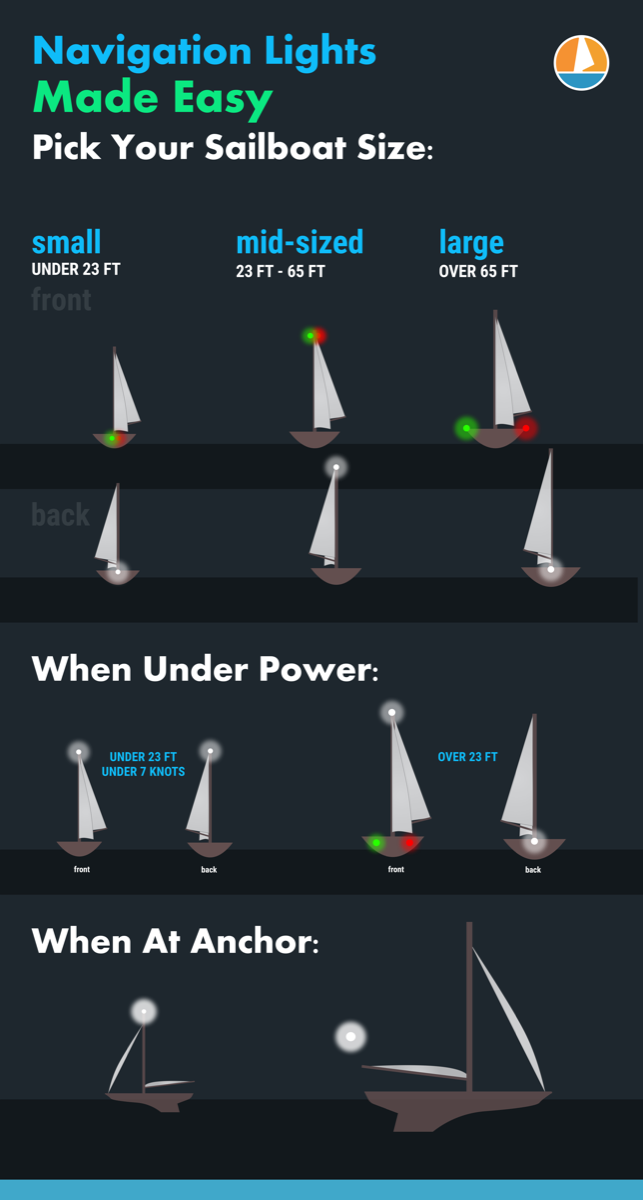
On this page:
What are the official colregs rules for your sailboat, what about the uscg (united states coast guard) rules, lighting at anchor, identifying the boats around you.
The International Regulations for the Prevention of Collision at Sea , abbreviated "COLREGS" is very specific about the lights required, their shapes and sizes, and the distance they must be visible. For the smaller boat, the following definitions apply.
- Masthead Light - a white light placed centerline on the boat showing an arc of 225 degrees with 112.5 degrees either side of the front of the vessel.
- Sidelights - A red light on the port side and a green light on the starboard. They must show an arc of 112.5 degrees from centerline of the bow.
- Stern light - A white light on the stern of the boat showing an unbroken arc of 135 degrees from centerline of the vessel.
- All-round light - A light showing in an unbroken arc of 360 degrees.
The good news is you need not measure these angles. Any properly installed USCG or COLREGS approved light which will cover the correct arcs. If you have to replace the original light from your boat, make sure it's with an approved replacement.
Lights When Sailing
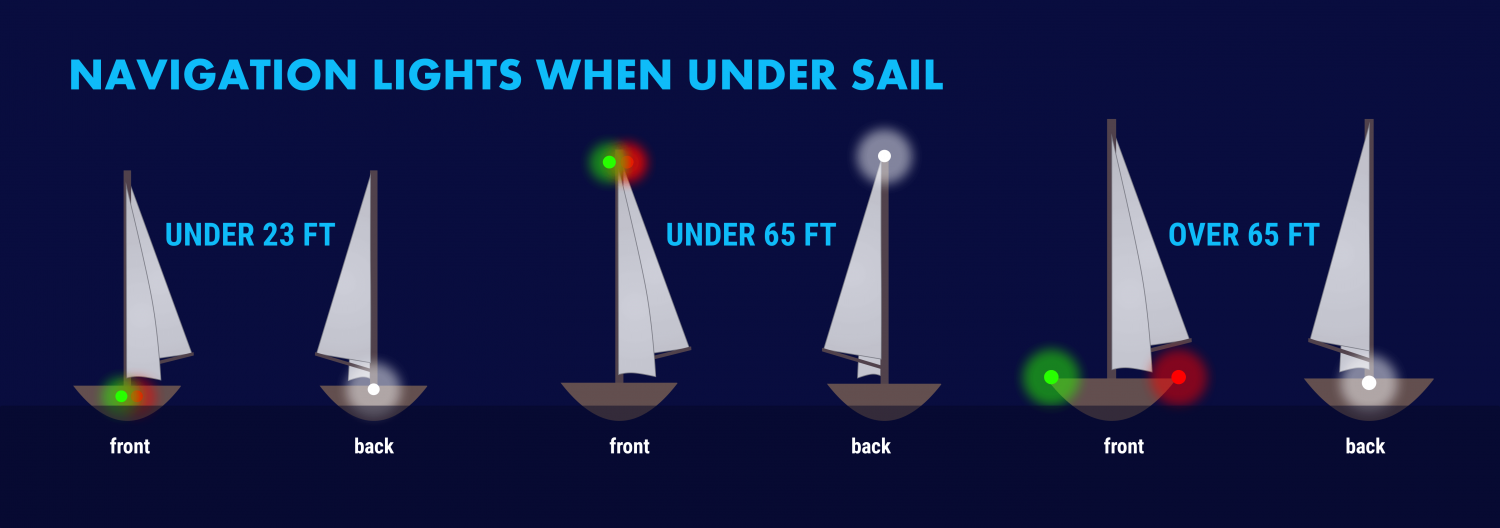
The specific rules for a sailboat under sail are in COLREGS Rule 25 and vary slightly with the size of the boat. A sailboat powering is considered a power boat and falls under in Rule 23.
- Under 23 feet (7 meters) - side lights and a stern light, possible. If these lights can not be displayed a light must be kept at hand to help avoid a collision. This can be a bright flashlight.
- Over 23 feet - Side lights visible to one nautical mile and stern light visible for two.
- Vessels under 65 feet may combine both sidelights into a single lantern on the bow.
- May show a tricolor light on the masthead instead of sidelights and a stern light. It's one or the other though, do not show these lights at the same time .
- Masthead light must be visible for three nautical miles, all other lights must have a two nautical mile visibility.
- Side lights must be separated.
- May not show a masthead tricolor light.
- Masthead light must have five nautical mile visibility, all other lights must be visible for two nautical miles.
- Optional masthead lights - any vessel under sail may display a red light over a green light at the masthead with sidelights and stern light. The red over green may NOT be displayed with a masthead tricolor light. It's one set or the other.
Lights When Motoring
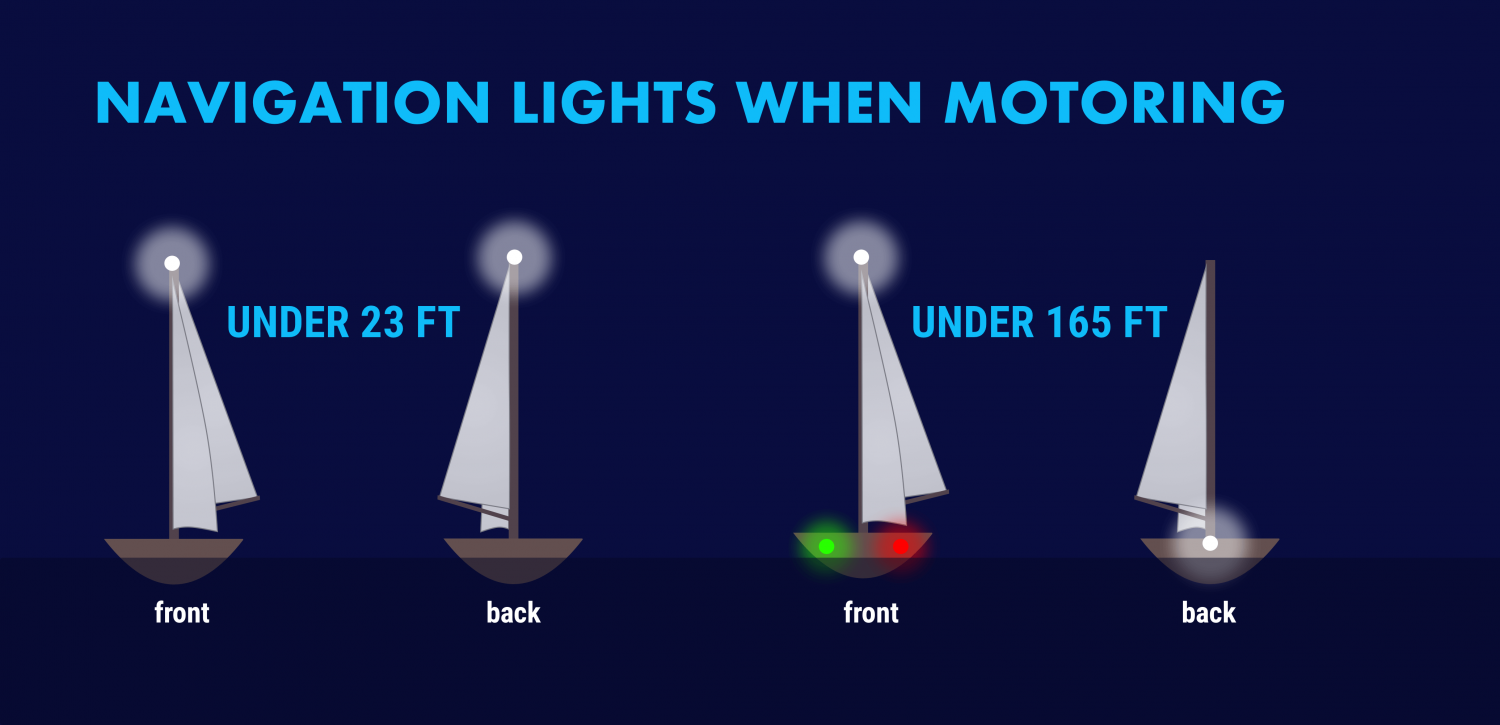
For all navigational purposes a sailboat under power is considered a power boat. This includes motor sailing - if the engine is on and providing propulsion you are on a power boat, even if the sails are up . This applies to navigation lighting, sound signals in fog and limited visibility, and rights of way.
Sailboats under 50 meters under power need to show:
- A masthead light
- Stern light
A power-driven vessel under 23 feet (7 meters) that does not exceed seven knots of speed may display an all around white light, though sidelights should be used if available.

The USCG has published its own "Rules of the Road" that are based on the COLREGS. In addition, it has rules for the "Inland Waterways" for rivers, inland lakes and the Great Lakes.
The good news is this has no impact on what you have to do with your own boat.
They mostly relate to lighting changes on towed vessels like barges and tugs. For example, a vessel towing or pushing another vessel in the ocean under COLREGS shows two masthead lights, sidelights and a stern light, whereas in Inland Waterways the towing or pushing vessel displays two yellow towing lights instead of a white stern light.
If you sail on lakes, rivers or the Great Lakes where towed commercial traffic is common you should learn the inland lights, but coastal or ocean sailors will never see these.
When you anchor outside a designated mooring field, you should display an all around white light at the masthead or as high in the boat as practical.
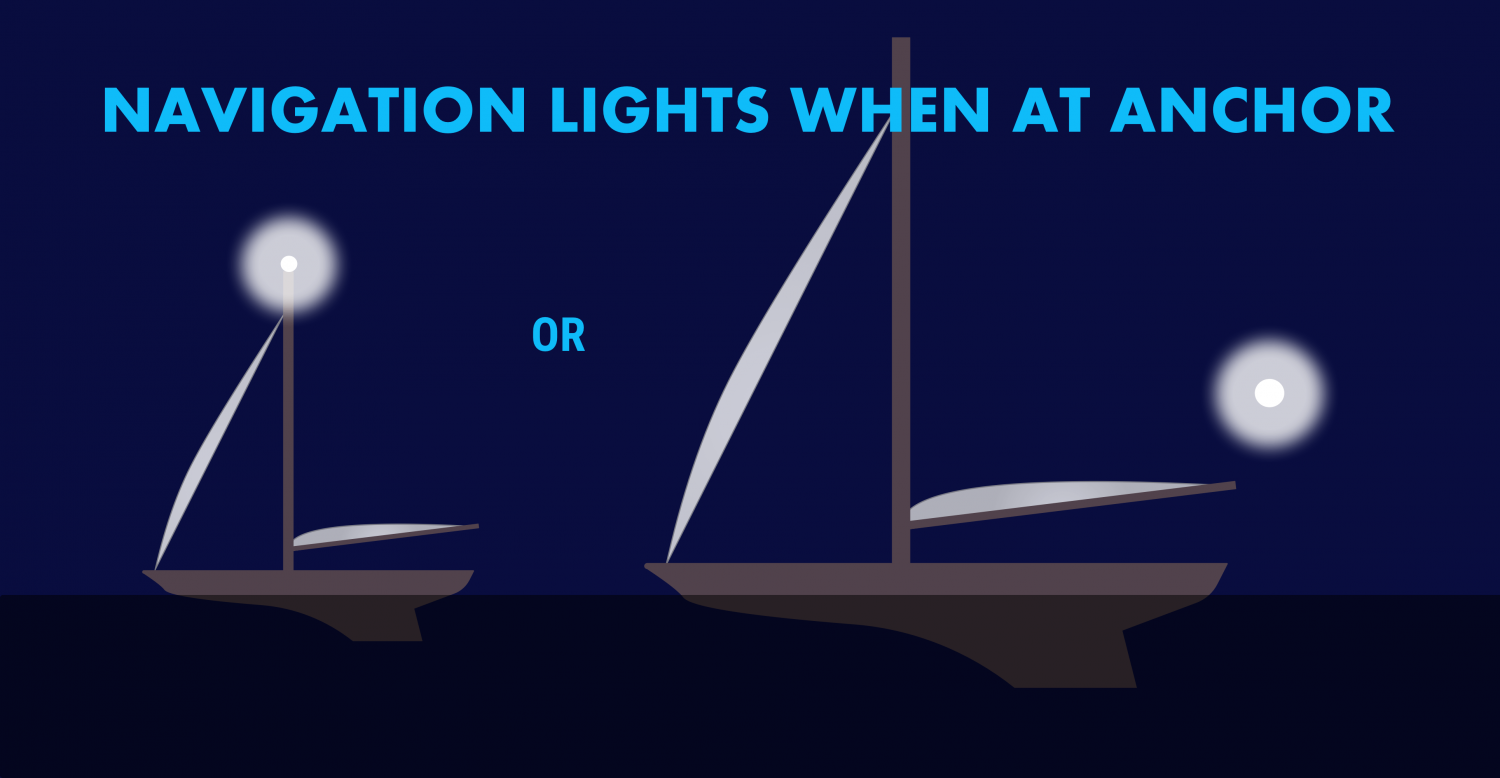
If your boat is large and has a very tall mast, you may wish to display another light closer to the waterline. Boats approaching in the dark may not see a light on a mast sixty or seventy feet in the air when they are close to your boat.
We use a simple garden path light on our stern when we anchor, left in a rod holder or flag socket. It comes on automatically at dusk and is a cheap and easy way to be more visible. There is no specific rule stating you can not display more lights than required, or the nature of any lights beyond the required all around light.
The COLREGS also specify that a round black "daymark" should be displayed in the rigging of any vessel at anchor. Very few small vessels observe this, however it is the correct display for a vessel in an anchorage.
If you tie to a mooring in a marked mooring area you are not required to display anchor lights, but there is no harm in doing so.
The other important reason to know your lights is to figure out what's going on around you at night. The water may be ablaze with white, red, green and other lights at night and they are your first key to avoiding collisions and problems.
All combinations of lights for fishing boats, commercial vessels, and so on are outside this post‘s scope. The odds are small you will encounter a submarine, seaplane or hovercraft at night, but there are regulations regarding specific lighting for each of those vessels!
There are a few fundamentals to help you figure out what that is you see on the horizon, which way it is going, and whether it is a danger to you.
Port Wine is Red
The fundamental rule is that red sidelights will ALWAYS be on the port side of a vessel, and green lights will always be on starboard. However, some vessels can use all around red and green lights for other purposes, though those will be higher than sidelights.

The light‘s on a ship is not important, some large tankers and freighters will have their sidelights far aft and put them on the superstructure for better visibility. It is not safe to assume that sidelights you can see are on the bow of large vessels .
When you can see the color, you know which way the bow is pointing. If it's red, it's pointing more or less to the left and will travel in that direction. A green light shows it is heading more or less to your right.
If you can see the red and green lights at the same time, you are looking directly at the bow of the vessel. When you are far away, this isn‘t as alarming as if you are close crossing. Seeing red and green lights together on a vessel is something you never want to see for long.
Be aware of red and green lights used in combination with other red, green and white lights. These may not be running lights and could have other significance.
Tankers, Freighters and Large Ships
Tankers, freighters and large ships will have side lights, a stern light and a masthead light. In addition, on vessels over 50 meters there will be a second masthead light further aft and higher than the forward light. The masthead light positions are a better tipoff to the bow direction and how far from the bow the sidelights might be. Remember - on a large vessel the sidelights may not be at the bow or even close to it.
USCG Inland Rules allow for a second all-around white light on large vessels on the Great Lakes instead of a second masthead light.
Fishing Boats
Fishing boats engaged in fishing will have more complex light displays. When they aren't fishing, they will show lights like any power vessel, but Rule 26 spells out light combinations that vary by the fishing activity being done. In general:
- Boats which are Trawling but not making headway will display a green all-around light over a white all-around light , and a masthead light aft of these lights. Boats making headway while trawling will show these lights, plus sidelights and a stern light.
- A vessel fishing other than trawling will show a red all-around light over a white all-around light . When making way they will also show sidelights and a stern light.
- If a vessel has gear more than 150 meters away from the boat, it will show a second all around light in the direction of the gear. The best rule is to give fishing boats as wide a berth as you can at night. They're easy to pick out if you check the top light configurations but their course may be difficult to predict.
Towing and Pushing
Towed vessels can be the most dangerous to cross, but they have the most lights to tell you what is happening. Refer to COLREGS or the USCG Rules of the Road Rule 24 for all combinations You can pick a tow/push vessel out with the following lights:
- Two or three masthead lights in a vertical line. Three masthead lights shows a tow over 200 meters. Additional masthead lights may show for larger tow vessels.
- A towing light (yellow light with the same characteristics as a stern light) directly above the stern light.
- The will also have side lights and a stern light.
- The towed vessel will show sidelights and a stern light. Lighting may vary under USCG inland rules, where towing lights may replace stern lights. Learn these differences if this is your regular cruising ground. If you think there is a tow ahead of you, always go well behind the aft most set of lights. Never go between a tow and avoid crossing ahead if possible as it may restrict their maneuverability.
Special Situations
There are several rare situations you may encounter. As a general rule, if there are a lot of lights and you don't understand them look for the sidelights on a moving vessel. If you can find them and figure out the direction it is moving, it makes the vessel easier to avoid. Stay well clear of lights you do not understand if you can avoid them without risk.
Most of these signals are used by larger, commercial vessels and you will not need them.
They use these light combinations with other light combinations. For example a towing vessel may also be restricted in maneuverability, and a vessel constrained by draft will show running lights if moving.
- Not Under Command - two all around red lights in a single line
- Restricted in Ability to Maneuver - red, white then red in a single line
- Constrained by draft - three all around red lights
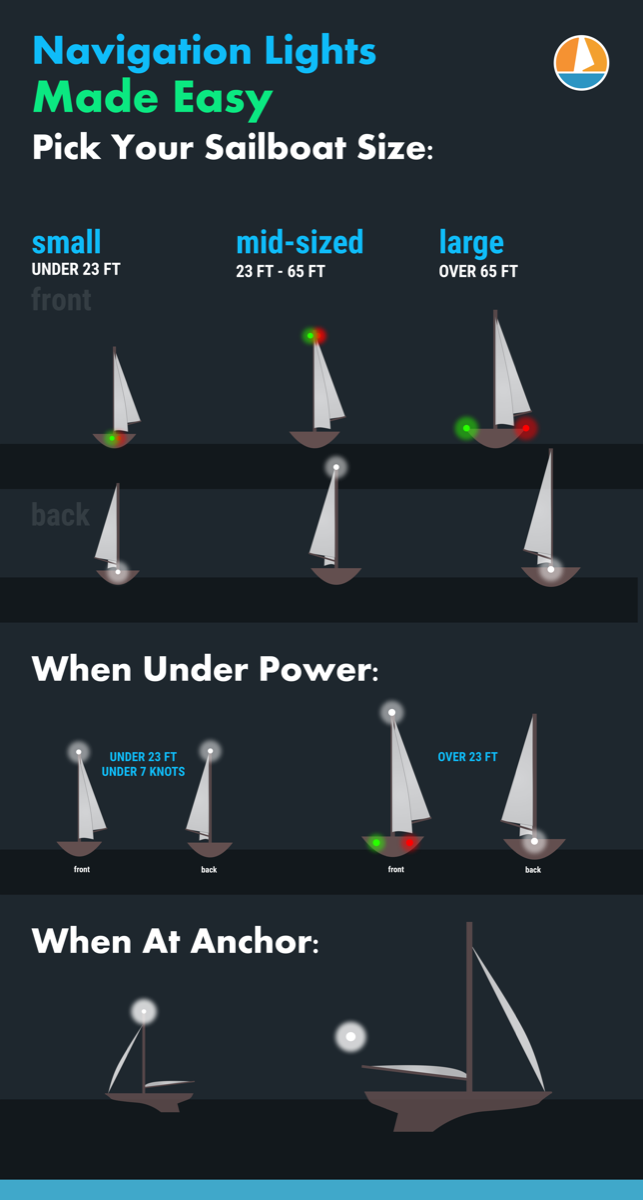
Leave a comment
You may also like, 17 sailboat types explained: how to recognize them.
Ever wondered what type of sailboat you're looking at? Identifying sailboats isn't hard, you just have to know what to look for. In this article, I'll help you.

The Ultimate Guide to Sail Types and Rigs (with Pictures)
Own your first boat within a year on any budget.
A sailboat doesn't have to be expensive if you know what you're doing. If you want to learn how to make your sailing dream reality within a year, leave your email and I'll send you free updates . I don't like spam - I will only send helpful content.
Ready to Own Your First Boat?
Just tell us the best email address to send your tips to:

What is a Properly Lit Sailboat at Night? (A Guide to Safety Regulations)

Have you ever been out on the open water and seen a sailboat with its lights on at night? It’s a beautiful sight to behold.
But did you know that there are specific safety regulations in place for properly lit sailboats? In this guide, we’ll be looking at the importance of having a properly lit sailboat, what types of lights are needed, how to install them, and how to test for proper operation.
Let’s get started and learn how to stay safe on the waters!
Table of Contents
Short Answer
A properly lit sailboat at night is a boat that is equipped with the correct navigation lights, which are required by law.
These lights must be visible for two miles and should include a green light on the starboard side, a red light on the port side, and a white light aft.
Additionally, the boat must also have a white masthead light that is visible for three miles.
The masthead light should be mounted at least two meters above the hull.
What Are the Safety Regulations for Properly Lit Sailboats?
When it comes to sailing at night, safety is of the utmost importance.
Properly lit sailboats ensure that they are visible to other boats, which reduces the risk of collisions and other accidents.
In order to ensure that a sailboat is properly lit at night , there are certain safety regulations that must be followed.
First and foremost, the sailboat must have the correct lighting equipment installed and in good working order.
This includes running lights (red and green lights found at the bow and stern of the vessel), an anchor light (a white light mounted on the masthead or the bow of the vessel), a stern light (a white light placed at the stern of the vessel), and a masthead light (a white light placed at the highest point on the vessel).
The running lights, anchor light, and stern light must be visible for at least 3 miles in clear conditions.
This allows other boats on the water to easily spot the sailboat, even in the dark.
The masthead light must be visible for at least 2 miles in clear conditions.
This ensures that the sailboat is easily seen from all directions.
In addition to having the correct lighting equipment, sailboats must also be equipped with a white all-round light.
This light must be visible for at least 2 miles in clear conditions and must be mounted on the mast at least 9 meters (or 30 feet) above the waterline.
The all-round light is an important part of a sailboats lighting system as it allows other boats to easily spot the sailboat from any direction.
These are just a few of the safety regulations that must be followed when it comes to properly lit sailboats.
Following these regulations will help to ensure that a sailboat is visible to other vessels on the water and will help to reduce the risk of accidents and collisions.
It is important that all sailors understand and adhere to these regulations in order to remain safe on the water.
Types of Lights Needed for Proper Lighting

When it comes to lighting a sailboat at night, there are a few key components that must be in place in order to ensure the safety of the vessel and the crew.
The most important of these components is the correct type of lighting equipment.
This includes various running lights, anchor lights, masthead lights, and stern lights.
Running lights are the red and green lights that are mounted on the bow and stern of the vessel, and are used to show the direction of travel of the boat.
They must be visible for 3 miles in clear conditions, making it easier to spot the boat in the dark.
Anchor lights are white lights that are mounted on the masthead or the bow of the vessel, and are used to show that the boat is anchored.
They must also be visible for 3 miles in clear conditions.
The stern light is a white light placed at the stern of the vessel.
This is used to show the direction of travel of the boat and should also be visible for 3 miles in clear conditions.
Finally, the masthead light is a white light placed at the highest point on the vessel.
This light is used to help identify the boat to other vessels on the water, and must also be visible for 3 miles in clear conditions.
Having all of these lights in good working order is essential for the safety of the boat and the crew.
It is important to make sure that all lights are visible from a distance of 3 miles in clear conditions, as this will make it easier to identify the boat in the dark.
It is also important to make sure that all lights are regularly inspected and maintained in order to ensure that they are in good working order.
How to Install the Lights
Installing the lights for a properly lit sailboat at night is an essential part of staying safe while sailing.
It is important to ensure that all of the lights are in good working order and that they meet the safety regulations for visibility.
The first step is to select the right lights for your vessel.
There are two main types of lights running lights and anchor lights.
Running lights are the green and red lights found at the bow and stern of the vessel, while anchor lights are white lights mounted on the masthead or bow of the vessel.
Once the lights are selected, the next step is to install them.
Start by attaching the anchor light to the masthead or bow of the vessel.
The anchor light should be securely mounted and wired in accordance with the manufacturers instructions.
Next, attach the stern light at the stern of the vessel.
This should also be securely mounted and wired in accordance with the manufacturers instructions.
Finally, attach the running lights.
These should be mounted at the bow and stern of the vessel.
It is important to test the lights after installation to make sure they are working properly.
Make sure that the lights meet the visibility requirements of 3 miles in clear conditions, as this is the minimum distance that the lights must be visible from.
Once the lights are installed and tested, youre ready to set sail in the dark!
Importance of Properly Lit Sailboats

When it comes to sailing, safety is of the utmost importance.
This is why it is essential for all sailboats to be properly lit at night.
Having the correct lighting equipment installed and in good working order is a critical component to ensure visibility and the safety of everyone on the water.
Not only does having properly lit sailboats maintain the safety of the sailors on the boat, but it also helps to prevent collisions with other vessels.
It is much easier to spot a sailboat on the water at night when it has the correct lighting equipment, such as running lights, anchor lights, stern lights and masthead lights.
All of these lights should be visible for at least 3 miles in clear conditions, making it much easier to spot a sailboat on the water.
Additionally, having properly lit sailboats at night is also important for law enforcement and marine patrol officers.
It makes it easier for them to identify and inspect boats, ensuring that all safety regulations are being followed.
This helps to keep the waterways safe for all boaters.
For these reasons, it is important for all sailboats to be properly lit at night.
By having the right lighting equipment installed and in good working order, it can help to maintain the safety of everyone on the water, as well as help to prevent collisions with other vessels.
It also makes it easier for law enforcement and marine patrol officers to identify and inspect boats, helping to keep the waterways safe for all boaters.
Different Types of Lights and Their Functions
When it comes to lighting a sailboat at night, there are several different types of lights that must be installed and in good working order in order to ensure the safety of the vessel and its occupants.
The most common types of lights used on sailboats are running lights, anchor lights, stern lights, and masthead lights.
Running lights are the green and red lights found at the bow and stern of the vessel.
These lights are typically used to signal the direction of the boats movement, and must be visible for 3 miles in clear conditions.
The green light is typically placed on the port side (left side) of the boat, and the red light is placed on the starboard side (right side).
Anchor lights are white lights mounted on the masthead or bow of the vessel.
They are used to indicate that the boat is at anchor, and must also be visible for 3 miles in clear conditions.
Stern lights are white lights placed at the stern of the vessel.
These lights indicate the boats direction of travel, and must be visible for 2 miles in clear conditions.
The masthead light is a white light placed at the highest point on the vessel.
This light is typically used in conjunction with the stern light to indicate the direction of travel, and must be visible for 2 miles in clear conditions.
In addition to these lights, boats may also be fitted with a variety of other lights such as tricolor lights, sidelights, all-round lights, and deck lights.
These lights are typically used to indicate the presence of the vessel in low-visibility conditions, and must be visible for 2 miles in clear conditions.
It is important to ensure that all lights on a sailboat are in good working order and visible from a distance in order to make the vessel visible to other boats and comply with safety regulations.
A properly lit sailboat at night is one that has the correct lighting equipment installed and in good working order.
Benefits of Properly Lit Sailboats

Having a properly lit sailboat at night is essential for staying safe on the water.
With the right lighting equipment installed and in good working order, you can be easily seen by other vessels and prevent possible collisions.
Additionally, having the right lights on your sailboat can help other boaters determine your vessels size, direction, speed, and even your intentions on the water.
Having the right lights can also give you a sense of security while youre out at night.
Knowing that youre visible to other vessels reassures you that youll be able to be seen and spotted if you need assistance or if theres an emergency.
When youre out on the water at night, having a properly lit sailboat can also make navigation easier.
By having the correct lighting equipment installed, youll be able to easily spot buoys, markers, and other vessels, making it easier for you to stay on course and reach your destination in a timely manner.
Having the proper lights also helps to keep your sailboat in compliance with safety regulations.
If youre stopped by the coast guard or other law enforcement, having the right lights can help to avoid any potential fines or penalties.
Overall, having a properly lit sailboat at night is essential for staying safe on the water.
Not only does it make it easier for other vessels to spot you, but it can also help with navigation and make sure that youre in compliance with safety regulations.
Properly lit sailboats can also give you a sense of security and peace of mind, knowing that youre visible to other vessels in the area.
How to Test Lights for Proper Operation
Testing lights on a sailboat at night is an important part of ensuring that the craft is properly lit and visible to other vessels.
It is essential for safety, as well as compliance with regulations set by the United States Coast Guard.
Before each voyage, it is important to inspect all of the lights and make sure that they are in proper working order.
The first step to testing lights is to turn them on and check that they are functioning correctly.
It is important to make sure that all of the required lights are present and that they are bright enough to be seen in clear conditions for up to 3 miles away.
The running lights should be a green light at the bow and a red light at the stern, while the anchor light should be a white light mounted on the masthead or the bow of the vessel.
The stern light should be a white light placed at the stern, and the masthead light should be a white light placed at the highest point on the vessel.
Another important step in testing lights is to make sure that they are not obstructed in any way.
This includes checking for any wires, cables, or other objects that could block the lights from being visible.
This is especially important for the masthead light, as it needs to be accessible in order to be seen from a distance.
It is also important to check the wiring of the lights to make sure that they are securely connected and not corroded or damaged.
Finally, it is important to check the bulbs of the lights to make sure that they are all functioning correctly.
It is important to check the wattage of the bulbs to make sure that they are bright enough to meet the standards set by the United States Coast Guard.
It is also important to make sure that the bulbs are not cracked or damaged in any way, as this could affect their visibility.
Following the steps outlined above will help to ensure that all of the lights are in proper working order and can be seen from a distance in clear conditions.
This is important for safety, as well as compliance with regulations set by the United States Coast Guard.
Final Thoughts
Having the correct lights installed and in proper working order on your sailboat is essential for safety and visibility on the water at night.
Knowing what type of lights you need, how to install them, and how to test them for proper operation is key.
While it may seem daunting to install and maintain all these lights, the benefits of having a properly lit sailboat at night far outweigh the effort.
So take the time to review safety regulations, and make sure you have the right lights installed and operating correctly to ensure a safe and enjoyable sailing experience.
James Frami
At the age of 15, he and four other friends from his neighborhood constructed their first boat. He has been sailing for almost 30 years and has a wealth of knowledge that he wants to share with others.
Recent Posts
Does Your Boat License Expire? Here's What You Need to Know
Are you a boat owner looking to stay up-to-date on your license requirements? If so, youve come to the right place! In this article, well cover everything you need to know about boat license...
How to Put Skins on Your Boat in Sea of Thieves? (Complete Guide)
There is a unique sense of pride and accomplishment when you show off a boat you customized to your exact specifications. With Sea of Thieves, you can customize your boat to make it look like your...
Great choice! Your favorites are temporarily saved for this session. Sign in to save them permanently, access them on any device, and receive relevant alerts.
- Sailboat Guide
- Collections
The 30 most popular light sailboats

Optimist Dinghy (Int)

Catalina 22

Naples Sabot

Catalina 25

Albin Vega 27

O'Day 22

South Coast 22

O'Day 25

San Juan 21

West Wight Potter 15

Super Dorade (Sergent)

Hartley TS 16
Catalina capri 22.

Jeanneau Flirt

Archambault Surprise 25

Columbia 22
Embed this page on your own website by copying and pasting this code.

- About Sailboat Guide
©2024 Sea Time Tech, LLC
This site is protected by reCAPTCHA and the Google Privacy Policy and Terms of Service apply.

Please verify you are a human
Access to this page has been denied because we believe you are using automation tools to browse the website.
This may happen as a result of the following:
- Javascript is disabled or blocked by an extension (ad blockers for example)
- Your browser does not support cookies
Please make sure that Javascript and cookies are enabled on your browser and that you are not blocking them from loading.
Reference ID: e298194d-e622-11ee-98b6-2de57c8f977f
Powered by PerimeterX , Inc.

- CLASSIFIEDS
- NEWSLETTERS
- SUBMIT NEWS
The Best Lopolight Navigation Lights for Sailboats from 12 to 20 Meters
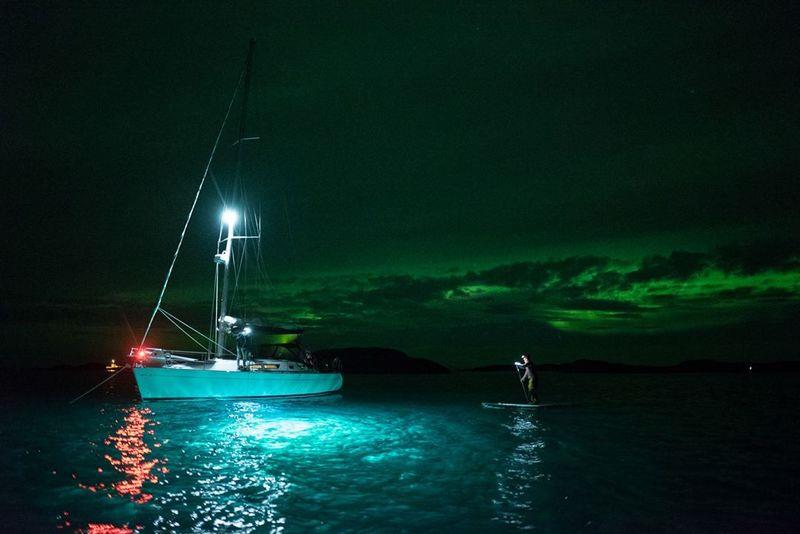
Related Articles
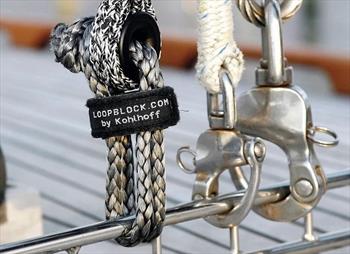
Elevate your sailing experience with a lightweight sailboat
Infusion, carbon, sandwich, CNC.. we use the most advanced technologies to build lighter sailboats.
%201000x900.jpg)
I love that I can handle and manoeuvre my Reverso by myself. The component parts are light enough for me to be able to manage solo, enabling me to go anywhere and sail anytime I want. We all love the feeling of freedom when sailing. With Reverso fitting easily into the back of my car, I feel even more free to chase that feeling!
- Hayley, Sydney

Lighter, better, stronger
The lightness brings a super smooth and precise helming experience with lively accelerations. Sharp turns or easy drive, you set the pace !
Effortless handling
Weight is important because it makes handling, launching, and sailing easier, faster and much more enjoyable.Accelerations are straightforward and the driving experience immediately puts a smile on your face.Discover what the future of sailing looks like and join owners in more than 26 countries around the world
.jpeg)
Boatbuilding excellence
The infusion process allows for the best weight/strength ratio. Our composite sandwich is made of a honeycomb Soric® core with side layers of fibre. We use carbon fiber where the loads are the greatest.
ORDER YOUR REVERSO
See our boats pricing, customers testimonials, get more info on delivery and get our letest brochure
Common questions about lightweight sailboats
Why is the reverso a superlight sailboat .
- It's built in house in our french factory, not at the other side of the world. So we have full control over the process
- it's made of sandwich composite fiberglass with carbon reinforcements
- it's built under vaccum infusion
- The mast is made of high modulus carbon fiber, it wieighs only 3150 grams
GET YOUR REVERSO AIR
Sign up now for our WhatsApp newsletter and receive a FREE SVB set of playing cards!
- Saved Guides
- My Skipper profile
- My boat on Portmaps.com
- General settings:
- Newsletter and messages
- NEW WhatsApp & SMS
- Compare list
Are you missing items that you have already placed in your shopping cart? Log in to see your saved items.
- Spare parts
- SVB@Youtube
- Boat Safety Equipment
Navigation Lights on Sailing Yachts and Motor Boats

Navigation lights ensure the safety of everyone at sea. The Convention on the International Regulations for Preventing Collisions at Sea (IMO COLREG 72) precisely sets out the guidelines for navigation lights, i.e., displaying lights, their range (distance from which the light is visible), as well as how they should be constructed and assembled. Our guide is of interest to sailors and sports boats enthusiasts with boats up to 20 m in length.
Regulations and official certifications:
When must navigation lights be displayed, what are the regulations concerning the use of navigation lights at sea, how do i know that my lights are eu-compliant, what is a ce mark, how are navigation lights defined, minimum range of navigation lights:.
- From what distance must lights be visible?
- What lights are required for my boat?
What lights must be displayed on a sailboat or rowing boat with a motor?
What lights should i exhibit when at anchor, what lights should be displayed to show that a vessel is unable to manoeuvre.
- How do I indicate that my vessel has run aground?
Navigation lights – Conventional and LED:
What distinguishes led from conventional navigation lights.
- Replacement bulbs for conventional & LED lights
What are the advantages of LED navigation lights?
Switching from conventional to led navigation lights.
According to COLREGs part C, rule 20), navigation lights must always be used on board from sunset to sunrise or during the day if visibility is poor.
Please refer to the German Traffic Regulations for Navigable Maritime Waterways , §8 -10 and Preventing Collisions at Sea. Part C - Lights and Shapes. rules 20 - 31, and annexes I 1. - 14 for the exact wording.
NOTE: Vessels that are authorised to fly the German flag are generally only permitted to use approved navigation lights and sound signalling devices.
EU approval can be identified via the wheel mark symbol and the notified body number. BSH approved navigation lights (previously DHI) are marked with a model number (e.g., BSH/00/01/90).
However, even older lights with DHI approval that have already been installed maintain their approval, despite the changes made by the BSH.
In addition to the wheel mark symbol and German BSH approval, some lights are also approved by other countries, such as RINA (Registro Italiano Navale), MCA (Maritime and Coastguard Agency) and the USCG (United States Coast Guard). These are now recognised, provided the approval comes from the national approval body recognised in the country of origin.
National bodies whose accreditation is currently recognised in Germany:
The wheel mark symbol indicates approval of the Marine Equipment Directive (MED). This approval is valid for all EU member states, both for commercial vessels and recreational shipping.
0098 = Notified Body number (here 0098 = Germanischer Lloyd in Hamburg) 18 = year in which the mark is affixed, here 2018

- A CE mark is a symbol that must be affixed to a product by the manufacturer before it is sold on the European market. It indicates that the manufacturer is aware of the specific requirements for the product in question and that it fulfils the requirements of relevant European product directives. A CE mark does not supersede approval according to collision prevention regulations.
- Navigation lights are defined in detail by the International Maritime Organization (IMO), according to the International Regulations for Preventing Collisions at Sea, 1972 (COLREGs) Convention on the International Regulations for Preventing Collisions at Sea, 1972), in sections C and D. The following rules apply:
Which navigation lights are required on board according to IMO COL REG?
Definitions according to the 1972 International Regulations for Prevention of Collisions at Sea (COL REG 72):

1. Side lights for starboard and port
A green light on the starboard side and a red light on the port side, which shine from dead ahead in an arc of 112.5° aft to a point 22.5° abaft the beam (behind the beam) on either side of the vessel. On ships of less than 20 metres in length, the two individual sidelights may be replaced by a dual-colour combined light. This must be centrally located on the bow and stern axis.

2. Stern light
A white light mounted as close to the stern as possible and shines dead ahead in an arc of 135° (67.5° to each side). The mounting height should be aligned to the height of the side lights and should never be higher.

3. Three-colour light for sailing vessels (sailing lights)
On sail boats up to a length of 20 m, the side light and stern light can be combined into one three-colour light mounted on top of the mast. However, as soon as the sail boat's motor is engaged, the use of a three-colour light is no longer permitted. The rules for motor-powered vessels then apply.

4. Mast-head light
A white light placed over the centre line of the vessel and shines dead ahead in an arc of 225° (from straight ahead up to 22.5° more aft than crosswise to each side). The mounting height should be at least 1 m higher than the side lights. In the past, the mast-head light was also referred to as a steam boat light or steamer light, as it is only seen on ships that operate under engine power.

5. Signal light or all-round light
A light that shines in a complete circle of 360°. It may emit white, red or green light, depending on use. Examples of use: All sailboats and motorboats at anchor must exhibit a white anchor light . Ships over 12m in length must, if necessary, display vessel-in-distress lights (two red signal lights) placed at a vertical distance of at least 12 m. The distance between such lights must not exceed 1 m.
From what distance must navigation lights be visible?
The range indicates the distance from which the light can be seen. The minimum ranges of navigation lights are defined according to ship size as follows::
Best-seller Hella marine

Note: When sailing boats are powered by a motor, the rules for motorboats apply and not for sailboats. The tricolour light may then no longer be displayed.

Displaying lights for sailboats up to 20 m
1 x red port side light
1 x green starboard light
1 x stern light
Also allowed:
1 x red all-round light on or near the mast top
1 x green all-round light on or near the mast top

1 x 3-colour light

Sailing vessels under 7 m (dinghies or small sports boats)
If, due to their design, no modern lights can be fitted, sailing vessels under 7 m in length and vessels being rowed must always carry an electric torch or lantern showing a white light, ready to exhibit in sufficient time to prevent a collision.
1 x Electric light or a torch with white light

Motorised vessels over 12 m
Lights used must be either / or:
1 x white masthead light fore

1 x dual colour light

Motorised vessels under 12 m
Alternatively, motorised vessels under 12 m can exhibit the following lights:
1 x white all-round light

Motorised vessels under 7 m and 7 knots maximum speed (small motor boats, dinghies or inflatables):
Motorised vehicles under 7 metres and with a maximum speed of no more than 7 knots can display the following navigation lights: all-round lights, portside and starboard lights.
The following applies in accordance with German Traffic Regulations for Navigable Maritime Waterways (SeeSchStrO): If, due to their design, no lights can be displayed (e.g., dinghies), sailing vessels under 7 m in length and 7 knots maximum speed must carry an electric hand-held spotlight or a torch to prevent collisions in the dark.
Left: 1 x white all-round light, 1 x red port side light, 1 x green starboard light
Right: 1 x hand-held spotlight or torch
Best-seller Aqua Signal Conventional

Best-seller Aqua Signal LED

Provided no engine power is used, the rules for sailboats apply. Motor-sailing vessels must display a large black cone pointing downwards when sailing during the day or at good light.
For vessels travelling under sail or at rudder during darkness or at reduced visibility, the rules for carrying lights for motorised boats automatically apply. This then depends on the length of the boat.
By day with a black cone, tip pointing downwards.
Visual signalling equipment

Torches & Spotlights

How must navigation lights be mounted on board?
Navigation lights must be securely mounted perpendicular to the waterline. Mast-head lights and stern lights should both be placed above the keel line.
At anchor during daylight? This must be displayed with a black anchor ball.
If the vessel is anchored outside of an area of water known by the River and Shipping Police Authority as an anchorage and berth for small vessels, this must be indicated as follows:
A black ball by day, 1 x white all-round light at night

Marker Lights

If your boat is unable to manoeuvre*, this should be indicated as follows:
Stationary: 2 x red all-round light, 2 x black ball, one below the other (during the day)
Moving: 1 x red port side light, 1 x green starboard light, 1 x white stern light
* A vessel is described as if, due to exceptional circumstances (e.g., rudder failure or engine malfunction), it cannot manoeuvre as prescribed and therefore cannot avoid another vessel.

How do I indicate correctly that my sailboat or motorboat has run aground?
If your boat has run aground, this should be indicated as follows:
2 x red all-round light, 1 x white all-round light, 3 x black ball, one below the other (during the day)
Manufacturers that specialise in navigation lights such as Aqua Signal or Hella Marine supply a wide range of internationally approved navigation lights which work with conventional (with BSH bulb) or with permanently installed light-emitting semiconductor components (LEDs). The bulbs required for operation are an integral part of the approval. Replacement bulbs must also be certified so that approval / your insurance protection is guaranteed. Ships under 20 m: Stern and anchor lights require BSH-approved light bulbs with 10 watts, all other navigation lights 25 watts.
All series listed above with BAY15d sockets could alternatively be operated with a high-Power LED . The big advantage in doing so is that the LED is suitable for multiple voltages (10-30 V) and consumes just 3 watts during operation. Since the light colour, range of light or beam angle can vary depending on the housing, this light is NOT yet internationally approved.
Spare Bulbs - Conventional & LED

Energy consumption on sailing ships is, as ever, a topic of significant interest. This is especially true for blue-water sailors who like to sail longer distances at a stretch. The arguments for converting to LED technology are as follows:
- High energy savings due to the low power consumption
- Long lifespan (over 10,000 hours)
- MultivoltTM technology (10-30V) with greater tolerance to voltage peaks
- Compact and light housing constructions
- Waterproofed, hermetically sealed housings
- Maintenance free
When switching completely from conventional navigation lights to LED lights, lights with the BSH seal of approval / EU wheel mark meet all the requirements in terms of light colour (no risk of blue tint), range of light and beam angle, and that you are travelling in accordance with KVR.
Navigation lights with LED technology

Replacing your navigation lights is often easy to do as manufacturers usually use the same mounting points for LED lights or have an adapter plate for further use of existing drill holes:

Adapter plate

Share our guide on social media

Written by our SVB (technical) experts
Our SVB safety experts regularly carry out maintenance checks and tests on our safety products, such as life jackets, life rafts etc. They test products and base their recommendations on many years of experience and their own know-how.
- New Sailboats
- Sailboats 21-30ft
- Sailboats 31-35ft
- Sailboats 36-40ft
- Sailboats Over 40ft
- Sailboats Under 21feet
- used_sailboats
- Apps and Computer Programs
- Communications
- Fishfinders
- Handheld Electronics
- Plotters MFDS Rradar
- Wind, Speed & Depth Instruments
- Anchoring Mooring
- Running Rigging
- Sails Canvas
- Standing Rigging
- Diesel Engines
- Off Grid Energy
- Cleaning Waxing
- DIY Projects
- Repair, Tools & Materials
- Spare Parts
- Tools & Gadgets
- Cabin Comfort
- Ventilation
- Footwear Apparel
- Foul Weather Gear
- Mailport & PS Advisor
- Inside Practical Sailor Blog
- Activate My Web Access
- Reset Password
- Pay My Bill
- Customer Service

- Free Newsletter
- Give a Gift

How to Sell Your Boat

Cal 2-46: A Venerable Lapworth Design Brought Up to Date

Rhumb Lines: Show Highlights from Annapolis

Open Transom Pros and Cons

Leaping Into Lithium

The Importance of Sea State in Weather Planning

Do-it-yourself Electrical System Survey and Inspection

Install a Standalone Sounder Without Drilling

Rethinking MOB Prevention

Top-notch Wind Indicators

The Everlasting Multihull Trampoline

In Search of the Snag-free Clew

What’s Involved in Setting Up a Lithium Battery System?

Reducing Engine Room Noise

Breaking Point: What Can Go Wrong With Your Yanmar?

Mildew-resistant Caulks for Boats

Can We Trust Plastic Boat Parts?

Repairing Molded Plastics

Mailport: Marine plywood, fuel additives, through bolt options, winch handle holders

The Day Sailor’s First-Aid Kit

Choosing and Securing Seat Cushions

Cockpit Drains on Race Boats

Rhumb Lines: Livin’ the Wharf Rat Life

Safer Sailing: Add Leg Loops to Your Harness

Resurrecting Slippery Boat Shoes

Tricks and Tips to Forming Do-it-yourself Rigging Terminals

Marine Toilet Maintenance Tips


Learning to Live with Plastic Boat Bits

The Ultimate Guide to Caring for Clear Plastic
- Safety & Seamanship
RAM Lights for Sailboats
A search for a brighter anchor light yields a versatile surprise..
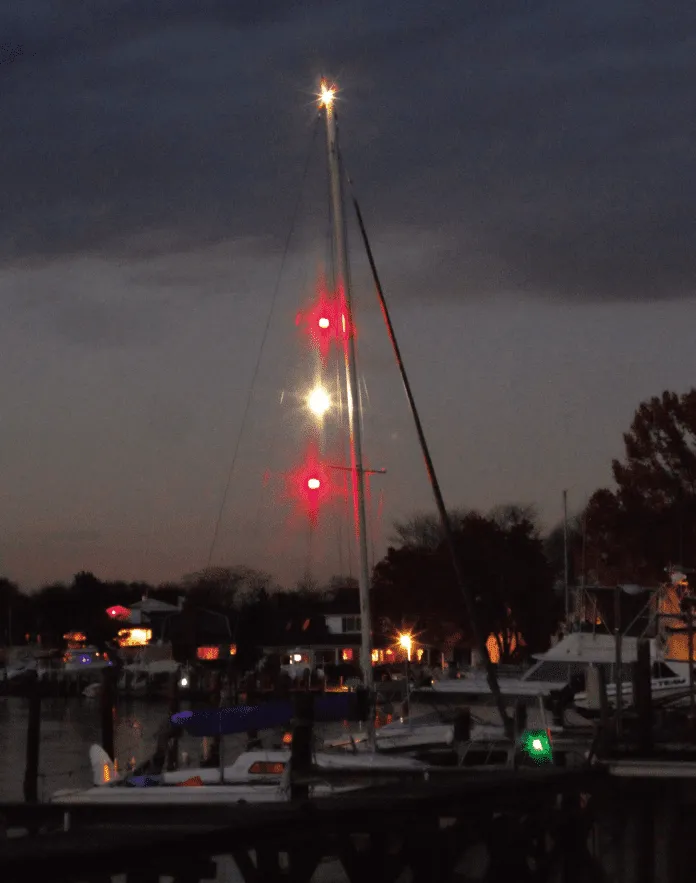
We have the minimum required lights, including running lights for sailing and motoring, and an anchor light. We might even have an electronic distress signal (“ Distress Flares Go Electric, ” June 2021). But do we have lights for rare navigation lighting situations, such as restricted ability to maneuver (RAM) or not under command (NUC)?
Ships, fishing boats, tugs, and dive boats are just some of the vessels that have masts dedicated for lights to alert nearby ships of their status, and to signal situations that might prevent them from maneuvering to avoid collision. Relatively few sailors have a means of showing all the specialized lights that might apply to sailboats. Should we?
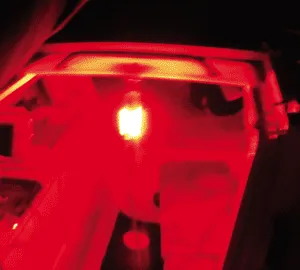
An anchor light is not for drifting, using a sea anchor, or any situation where you are not made fast to the ground. Flashing lights are only for distress. Thus, lighting and day shapes for a few additional navigation situations deserve discussion.
RESTRICTED ABILITY TO MANEUVER (RAM)
The lights for this situation are a vertical row of three lights, red/white/red, spaced 1 meter apart. The day signal is a ball/diamond/ball. RAM suggests that the motion of the boat will be predictable. A boat with divers in the water, hove to, or towing a drogue would be considered a RAM.
NOT UNDER COMMAND (NUC) DAY SHAPES AND LIGHTS
A vertical row of two red lights indicates the skipper has no control over motion, perhaps because of a broken rudder. Any motion, including drifting, qualifies as NUC. The day signal is two balls.
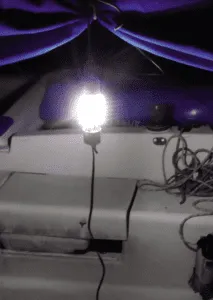
A day flag (either the blue and white “alpha” flag, or red with white diagonal stripe in the US) is required by law or regulation in the US and many countries. The divers are to stay within 25 yards (varies by state) when near the surface and boaters are to stay 300 yards from the flag (100 yards in a marked channel). No divers? Take the flag down. (Some states permit a flag painted on the side of dive boats).
At night a dive boat is considered restricted in its ability to maneuver (RAM), and the required lights are red/white/red, one meter apart in a vertical line. If the boat is drifting, running lights are also required, and if anchored, an anchor light is still required.
SEA ANCHOR OR DROGUE
Just like a dive boat that is drifting, a boat dragging a sea anchor or drogue needs to show running lights and RAM lights. Running with a drogue in heavy weather can be a matter of speed control and easing the motion, or survival. In the first case your ability to change course is limited, and you have very little control over the vessel’s speed. In the latter case you have no control over speed or course, but the motion of your vessel will be predictable.
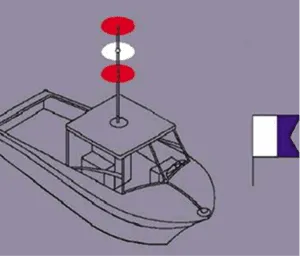
PROPER USE OF NUC INDICATORS
A boat with steering failure, dismasting, or some other situation that makes it impossible to control is considered not under command (NUC). A rudderless boat may randomly tack, circle, or speed up and slow down. Its motion is unpredictable. The day shapes and lights for this situation are not for sleeping or leaving watch, only for a boat that cannot be controlled.
COLREGS AND LIGHTS
A discussion of the Collision Regulations (COLREGs) regarding the above situations is best carried out with the rules at hand. The Coast Guard version, which includes U.S. inland rules as well as international rules, is available online ( www.navcen.uscg.gov/pdf/navrules/navrules.pdf ). Here are just a few excerpts relevant to lights and shapes for sailboats.
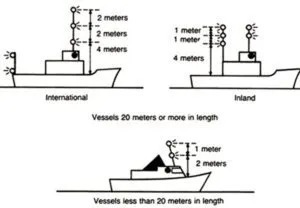
WHAT IS RESTRICTED ABILITY TO MANEUVER?
Definitions for a boat that is restricted in its ability to maneuver are in Rule 3 of the COLREGs.
(g)The term vessel restricted in her ability to maneuver means a vessel which from the nature of her work is restricted in her ability to maneuver as required by these Rules and is therefore unable to keep out of the way of another vessel. The term vessels restricted in their ability to maneuver shall include but not be limited to: (i)a vessel engaged in laying, servicing or picking up a navigation mark, submarine cable or pipeline; (ii)a vessel engaged in dredging, surveying or underwater operations; (iii)a vessel engaged in replenishment or transferring persons, provisions or cargo while underway; (iv)a vessel engaged in the launching or recovery of aircraft; (v)a vessel engaged in mine clearance operations; (vi)a vessel engaged in a towing operation such as severely restricts the towing vessel and her tow in their ability to deviate from their course.
SLEEPING UNDER SAIL OR UNDER BARE POLES
An unattended helm is not allowed under COLREGs. This is spelled out in Rule 5.
Every vessel shall at all times maintain a proper look-out by sight and hearing as well as by all available means appropriate in the prevailing circumstances and conditions.
Rule 37 covers distress signals.
When a vessel is in distress and requires assistance it shall use or exhibit the signals described in Annex IV of these Rules (33 CFR part 8) to illuminate her decks.
The accepted signal is a strobe flashing 50-70 times per minute. Sailors should also review also Rule 36, which states that any light used to attract the attention of another vessel cannot be mistaken for any aid to navigation. The rule also advises that the use of high intensity intermittent or revolving lights shall be avoided.
VERTICAL SPACING
Vertical spacing of lights is covered in Annex I. For boats less than 20 meters in length, the vertical row of lights must be greater than 2 meters above the uppermost continuous deck, spaced one meter apart, and be visible in all directions (no more than 6 degrees may be blocked by mast). For boats greater than 20 meters, the lights must be 4 meters above the deck and the spacing must be 2 meters (see illustration 2, page 18).
EXTRA LIGHTS
Rule 30 deals with extra lights in subsection (c):
A vessel at anchor may, and a vessel of 100 meters and more in length shall, also use the available working or equivalent lights to illuminate decks.”
FLORIDA DIVER LAW
Florida gets specific regarding divers. Not only are lights required at night, but a flag must be displayed. Interestingly, the specified flag differs from the international flag, which is the blue and white “Alpha” signal flag. According to Section 327.331 of Florida code:
(c) “Divers-down flag” means a flag that meets the following specifications:
1. The flag must be square or rectangular. If rectangular, the length must not be less than the height, or more than 25 percent longer than the height. The flag must have a wire or other stiffener to hold it fully unfurled and extended in the absence of a wind or breeze.
2. The flag must be red with a white diagonal stripe that begins at the top staff-side of the flag and extends diagonally to the lower opposite corner. The width of the stripe must be 25 percent of the height of the flag.
3. The minimum size for any divers-down flag displayed on a buoy or float towed by the diver is 12 inches by 12 inches. The minimum size for any divers-down flag displayed from a vessel or structure is 20 inches by 24 inches.
4. Any divers-down flag displayed from a vessel must be displayed from the highest point of the vessel or such other location which provides that the visibility of the divers-down flag is not obstructed in any direction.
(2) All divers must prominently display a divers-down flag in the area in which the diving occurs, other than when diving in an area customarily used for swimming only.
A black ball displayed where it is visible during they day indicates that a boat is at anchor. Use of this day shape for anchoring varies with the region, but in most of the U.S. no one uses them, few look for them, and most wouldn’t recognize it for what it is. Rules for smaller boats vary. In the U.S., boats less than 7 meters are exempt. Nevertheless, displaying a black ball makes sense near channels, so ships to determine your navigation status (anchored vs. underway) at a great distance. COLREGS specifies a ball with a minimum diameter of 2 feet, with exceptions.
For vessels of less than 20 meters in length, shapes of lesser dimensions but commensurate with the size of the vessel may be used, and the distance apart may be correspondingly reduced.
CONCLUSIONS
If you carry a sea anchor or drogue, have ever considered diving at night, or embark on single-handed voyages, making yourself both more visible and communicating your navigation status is smart. We don’t understand why hoistable light systems for recreational boaters is not available, so we’ve offered some do-it-yourself ideas in this report.
When it comes to lights for special situations like night diving or when the boat is disabled, recreational boats need temporary options that cost less and require little power. We found nothing practical that met our basic criteria for contingency use on sailboats. If you know of one, you can email us at [email protected] . These are all the lights that we found:
AQUASIGNAL HOISTABLE LIGHT
Aquasignal Series 40 hoistable lights. Similar to standard series 40 lights, these are 8 inches tall, 3 inches in diameter, and fit 25W incandescent bulbs (no LED option). Rigged as a red/white/red RAM light, they use 75 Ah of power each night, an unacceptable amount for many cruising boats. The cost is also steep, at $120 each ($360 total).
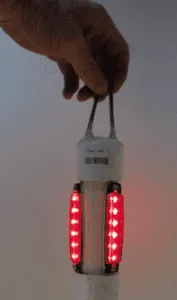
PERKO HALYARD MOUNT
The Perko halyard mount navigation lights are similar to the Aqua Signal lights, but they are discontinued, and we found no replacement. They cost about $85 ten years ago.
PRACTICAL SAILOR DIY LIGHT
Our DIY RAM light is based on the DIY anchor light modules but substituting red LEDs for white. They are weather proof, vibration resistant, meet the Coast Guard requirement for 3 mile visibility, and because the lights have a 120-degree vertical arc of visibility, full visibility is maintained even as a boat rolls heavily. The red version is slightly less bright than the white version, though it still meets the standard. You could, of course, mount four LED strips to make the red version brighter; there is enough room.
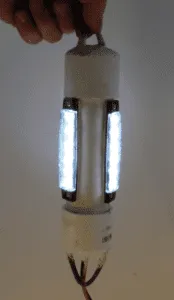
We considered adding switches, allowing a single unit to show a single white (anchor), red/white/red (restricted ability to maneuver) or two red (not under command), but decided that introduced additional failure points for options that would very seldom be used. Instead, we made the system modular, and you hoist only the components you need. They are chained together with cord/line extensions as needed. The cord/line extension is a 30-inch Dyneema strop with an eye in each end (one-meter spacing is required, and the light units are 10 inches long). Cable ties firmly attach a 24-inch 2-pin extension cord. One end of the strop is secured with a luggage tag hitch and the other with a screw link or shackle.
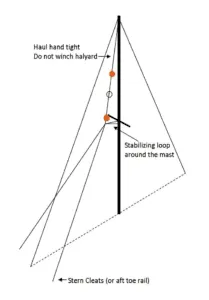
Our design for a DIY anchor light/RAM light is based on three white LED road trailer clearance marker lights, available for less than $1.50 per unit when purchased in packs. They meet the visibility requirements for boats of all sizes because they are designed to meet EU and US truck clearance light brightness requirements, which are significantly greater than those required for navigation lights. They are low-profile, weatherproof, and resistant to impact and vibration.
We mounted the lights around an 8-inch length of 1 ¼-inch PVC pipe; a single 5/16-inch hole passes the wires, two screws attach it in place, and it is sealed in place with a generous application of polyurethane caulk (we used Sika 291). The leads are coupled to a common 12V SAE 2-pin extension cord. Remember, LEDs are sensitive to polarity, so keep the positive and negative straight and used polarized plug connectors. The current draw is low enough (0.09 amps or 2.2 Ah per 24 hours) that we skipped the photo-electric cell that would turn it on and off automatically.
STEP BY STEP
1. Cut 6 ½-inch length of 1 ¼-inch schedule 40 PVC pipe.
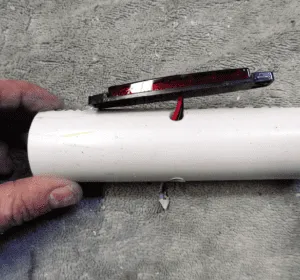
2. Drill three x 5/16-inch holes in the side for the light’s wires (Photo 1). Fit should not be too tight—you don’t want to pinch the wires. The holes are centered between the ends and spaced around the pipe 120 degrees apart. An easy way to mark for drilling is to wrap a sheet of paper around the pipe and cut at exactly one circumference length. Fold the paper into thirds, mark the folds, and wrap again. The folds will be 120 degrees apart and in line vertically, ready for marking
3. Drill holes for the mounting screws. Machine screws about ½-inch long are preferred; they won’t stick in far and they won’t cut the wire insulation. No need for nuts. Just drill holes 1/64-inch smaller than your screws, and they will self tap in the soft plastic.
4. Insert the wires through the center holes, apply sealant around each hole and down the center of the light strip, and screw them down. It is tempting to apply the sealant first, but then inserting the wires is a mess.
5. Wipe up the excess sealant. It’s a mess. You could mask around the holes for a neater finish.
6. Prepare the top cap (white anchor light-only). Drill two 3/16-inch holes in the cap, insert 10 inches of 3/16-inch Dyneema to form a loop, securing the ends with stopper knots. Apply sealant inside and out.
7. Prepare bottom cap and top cap of RAM modules. Same as Step 6, but add about 5/16-inch to center hole, to accommodate the plug pigtail.
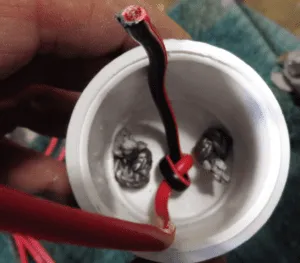
8. Thread the plug pigtails through the bottom cap hole and knot inside (Photo 2).
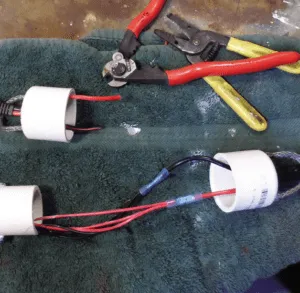
9. Twist the leads together and crimp to the pigtails (Photo 3). Be sure to strip enough insulation to allow for several twists. LEDs are polarity sensitive, so connect black-to-black (Photo 4). Seal the union with adhesive-lined heat shrink. Good fittings will have enough adhesive to fill the gaps between the three leads. The three leads, twisted together, should be about 14-16 AWG. RAM modules should have double-plug leads, one through the top and one through the bottom, so that they can be chained together.
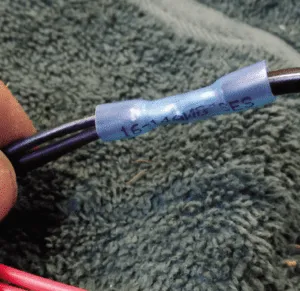
10. Note that although all 2-pin plugs appear identical, there is a distinct male and female. The male plug has the ground (black) exposed, so that accidental contact with a grounded surface, like a mast or engine, does not cause a short. Each light module must contain either a female plug (anchor light only) or one of each (RAM modules), so they can be chained together. Mark each module with an up arrow, or you will be frustrated when you plug in the wrong end and it doesn’t light.
11. Seal the Dyneema line and the pigtail into the bottom cap, inside and out.
12. Glue on both end caps on with PVC cement. The tensile strength of each unit exceeds 1,000 pounds (we tested them), so a string can safely be hauled as tight as hand tension allows.
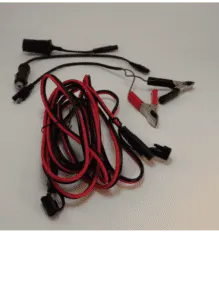
13. Prepare the supply cord. For the emergency anchor light we chose an 8-foot extension cord with SAE 2-pin connectors. We have three convenient outlets for this connector. We can plug it in just in front of the mast, in the cockpit, or in the cabin. In a pinch, you can rig a fused lighter plug directly to a battery (Photo 5), but lighter plugs are notoriously unreliable on boats, so this is temporary. As a supplemental harbor anchor light, we hoist the light 6 feet above the deck; at this level it is visible to nighttime dinghy operators and also lights up the deck. We can also extend with standard 2-pin extension cords. If the light is to be used as part of a RAM light system, the cord is shortened to 6 inches, so that it can be used as a module. Red light modules are the same as the anchor light module, except red LED marker lights are used.
14. Rig using non-stretch line (a halyard is good for the top) to reduce swinging. In wild weather, reduce swing by rigging the bottom line as a bridle that secures to the port and starboard toe rails (see Image 4). To prevent fore-aft swinging, add a loop (about 30 inches long) attached to the bottom light and around the mast, and raised to a point just below the spreaders. The bridles should be led aft and outboard. The lights must be pulled several feet away from the mast to keep the blind spot less than 6 degrees. The lights will hang at a slight angle, but this is not a big deal. In our case, the mast is raked sufficiently to serve this purpose. There is no need to pull the lights to the masthead, although they should be high enough to be visible above the swell.
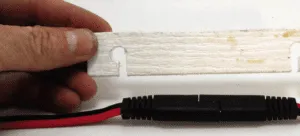
15. Prepare cord locks, if desired (Photo 6). The SAE plugs were designed for trailer wiring and the high friction fit is very unlikely to pull apart. But you can add locks for more security, and they take only a few minutes to make. The holes in the locks are 1/16-inch larger than the widest cord diameter. The slot is just wide enough to pass the narrowest dimension. The spacing is about 3/8-inch longer than the length of the closed plug pair. The strip can be either 3/16-inch HDPE or 1/8-inch aluminum, or fiberglass. It’s width is about 1 inch (aluminum or fiberglass) or 1 1/4-inches (high density polyethylene). Smooth the edges to avoid damaging the wire insulation.
The white light makes a useful cockpit and bilge work light. It’s waterproof. The red lights can be hung in the cabin or cockpit for vision-safe night lighting, although you still don’t want to look directly at the light (see “ Are Chart Lights Steering Us Wrong ,” PS October 2020).
Caps. $ 2 x 1.57 = $3.14
6.5” pipe = $0.70
LEDs = Three white side marker lights (6 LEDs each), 3 x $2.12 = $6.36
Assorted wire and sealant = $4
Cord = $4.20
Rope = $0.40
Total = $18.80
Since our August 2021 review of deck connectors (“ Watertight Connector Test ”), we’ve converted our F-24 test boat to SAE 2-pin connectors for many applications, including tiller pilot, mast lights, and utility cockpit connections. We like the price and widespread availability of the components, but the big selling point is easy interchangeability and ruggedness. For example, we can plug the emergency anchor lights and RAM lights into the mast base plug, the tiller pilot plug, a cabin plug, the cockpit plug, or straight to the battery with clips. Same with our utility washdown/emergency sump pump; we can plug it in wherever needed, just like appliances at home.
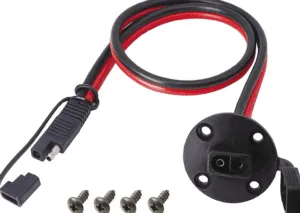
All of this applies equally to 4-pin connectors. They can be the better answer if you need more power to control more things. We’ve used 4-pin connectors for connections at the mast base for trailer boats.
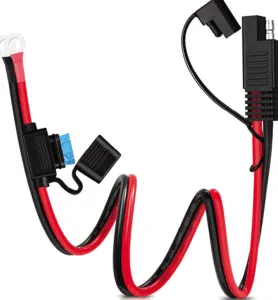
The exposed pin should be ground phase to reduce the risk of shorts. As long as the exposed pin is ground and the adjacent pin is power, 2-pin plugs can also be inserted into 4-pin sockets. Grease exposed ends with Tefgel or Green Grease twice per year (every few years inside the cabin). Keep the caps on when not in use so they don’t attract dirt and to cover the ground pin.
You will have to splice the wire tails. Crimping and heat shrink is preferred below deck. Soldering and adhesive lined heat shrink yields a more streamlined result and is acceptable for above-deck cords.
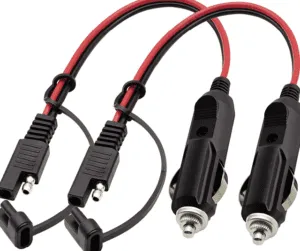
We like the broad deck mounting flange. We like the molded seal. Between these two factors, they absolutely cannot leak through the deck. Most have tinned wire, and because they are used for motorbike charging, the wire is typically at least 14 AWG.
Maintain polarity. If you are careful with your wiring you’ll ensure correct polarity.
We have used these SAE connectors on a Stilleto 27 for 8-10 years with no problems, while multiple brands of “marine-grade” connectors failed.
The COLREGs allows two lighting schemes for sailboats; either red and green side lights plus a stern light, or a single tricolor mounted at the top of the mast. The advantage of the tricolor is that it can be seen above waves. However, like a masthead anchor light, it is hard to see at close range. Also you can’t use a tricolor when motoring, since your white steaming light indicating a power-driven vessel must be above the side lights.
A less commonly seen combination is for sailing boats is red over green, one meter apart, at or near the top of the mast. This is in addition to the usual side lights farther down and the white stern light. Advantages of this setup are increased visibility in waves, visibility in close quarters, and unlike the other options, a means of estimating distance, since more than one light is visible at a time.
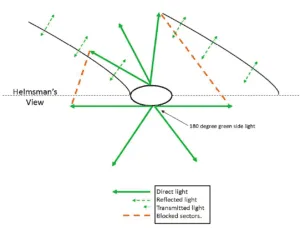
It is widely believed that the red-over-green light is for sailboats longer than 20 meters, but in fact there is no size restriction. A tricolor cannot be used by boats over 20 meters, and so red-over–green makes sense for them at sea. Ideally, the lights are above the mast and unobstructed in all directions. A one meter mast light could also be attached to the top of the mast; it won’t increase the air draft by one meter, since the VHF aerial is probably more than half that.
However, the USCG COLREGS manual clearly shows the green light some distance down the mast, where it will be blocked in some directions by the mast and sails. Green light will also reflect off the sails, which can be annoying. Commonly, instead of a single green light, 180-degree green side lights are mounted on each side of the mast, 1-meter down, with a red light at the masthead.
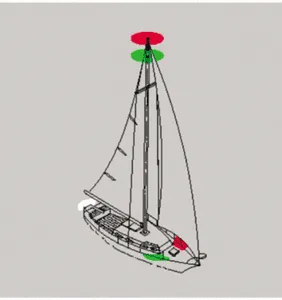
This requires one more pair of lights, but no more cabling than a tricolor. However, a hoistable red-over-green modular light like the one described in the adjacent articles could be used when more visibility is desired.
A paper recently submitted to World Sailing lays out the problems sailboats face trying to comply with the COLREGs ( http://honeynav.com/wp-content/uploads/2020/04/OC4biNavigationLightReportVerFinal-25596.pdf ).
RELATED ARTICLES MORE FROM AUTHOR
Sailboats under no circumstance are under the category of ram. They are not restricted of maneuver. No need for this
Where did you get this idea? Sailing vessels had in the past performed many of the tasks in Colregs Rule 3(g) and most are also auxillary power driven vessels. They can, for instance, engage in emergency towing and are then very much in a RAM condition. Bering Sea Gold had a sailboat involved in dredging (and diving!). The same lights are used for diving. People don’t dive off sailboats? That’s news. Sailboats can be aground, and then should display two red all around lights. Just omit the white in between.
Which case do you disagree with and why? Diving at night (COLREGS rule 27ei and state law)? Lying to a drogue (steering is greatly restricted and in survival conditions releasing the drogue is not an option)?
Sail or power is not a factor in these determinations. Very likely the sailboat has no sail up and is a power driven boat for the purposes of COLREGS.
LEAVE A REPLY Cancel reply
Log in to leave a comment
Latest Videos

Island Packet 370: What You Should Know | Boat Review

How To Make Starlink Better On Your Boat | Interview

Catalina 380: What You Should Know | Boat Review
- Privacy Policy
- Do Not Sell My Personal Information
- Online Account Activation
- Privacy Manager

Sailing Signals: Nautical Lights, Shapes, & Sounds
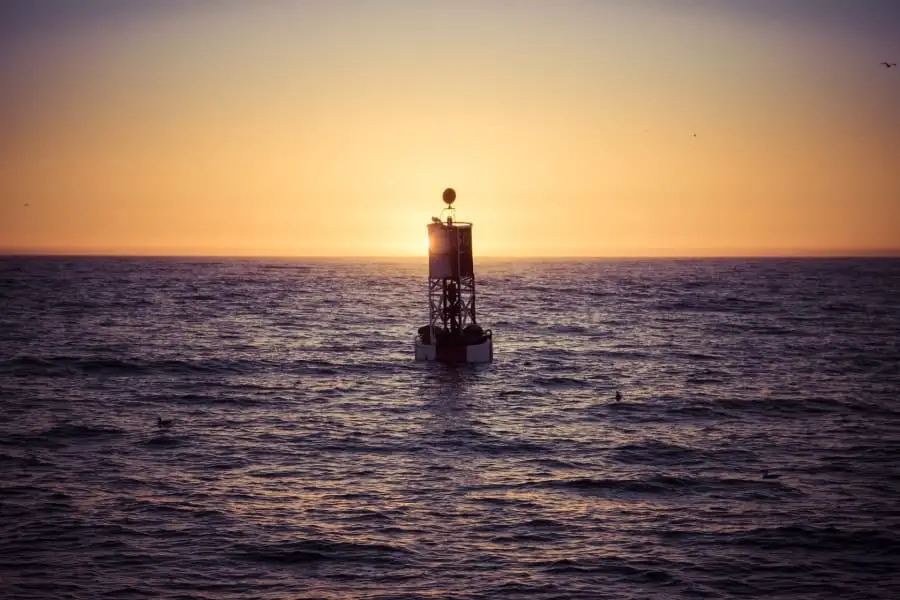
You might be wondering what all those lights, shapes, and sounds that are either attached to a vessel or emanating from them.
While it might not be obvious what these mysterious modes of communication mean, they play a very important role in ensuring the safety and proper communication between vessels and non-vessels alike.
Sailing safety has a lot to do with proper preparedness, which means having the right gear , plan, experience, and mindset. However, sailing safety also requires knowledge in the various forms of communication between vessels and non-vessels. This is where lights, shapes, and sounds play a big role.
By using various lights, shapes, and sounds when out on the water, vessels and non-vessels are able to communicate whether there’s danger afoot, they need help, or simply telling you to get out of the way.
We’ll explore the most common and vitally important light, shape, and sound signals to make sure you’re able to pick up and recognize them when the time is right.
Vessel Lights
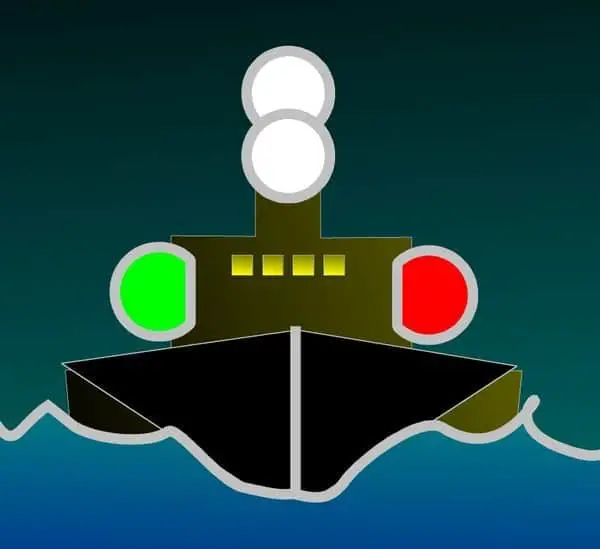
Whenever you see a vessel that has their lights on display, it’s most likely going to be during the evening when it matters most.
The combination of colors and how they’re oriented can mean a world of difference in terms of what they’re trying to communicate, so it’s important to keep an eye out.
The color of lights you’ll see when out on the water include white, red, green, and yellow. Again, you’ll see these on display at night when visual communication between vessels and non-vessels is crucial.
When you see lights on display, you’re essentially being told the vessel’s direction of movement, method of propulsion, and size.
Apart from the basic message of direction, propulsion method, and size, there are other light signals that are there to inform you of other situations. Some of those situations include when a vessel is
- Not under command
- Constrained by draft
- Unable to maneuver
The most important determination, when confronted with a vessel or non-vessel at night, is whether or not there’s a risk of collision.
Obviously, if there’s a risk of collision you need to attempt to communicate with the vessel immediately and to take proper action to avoid a collision. Ideally, you’ll be able to communicate with the other vessel so that you’re both in agreement about who does what to prevent a potential collision.
Basic Lights
As I mentioned previously, there are several basic colors that you’ll see on display from a vessel at night.
However, these lights can be displayed in different ways in terms of position on a vessel as well as how they’re displayed (e.g., blinking or static). Here are some basic definitions of lights that you should know.
Masthead Light
The masthead light is a static white light that sits partway up the main mast of a vessel and only displays to the front 225 degrees of the vessel.
This means that other vessels coming toward yours at an arc of 225 degrees will see an unbroken white light, which will inform them that you are possible head-on.
The sidelights are a pair of static lights that sit fore of the vessel at the bow with one being on the port side and the other on the starboard side.
The light on the port side is a static red light and the light on the starboard side is static green. The combination of both lights covers the same amount of arc as the masthead light, which is 225 degrees.
The sternlight is a static white light that sits as far back as possible aft the vessel at the stern and displays to the back 135 degrees of the vessel.
Other vessels who see this will know that they’re behind your vessel due to the light being lower than if they saw the masthead light and not being able to see the sidelights.
All-Round Light
The all-round light is a static white light that sits at the very top of a vessel’s mast and displays at a full 360-degree angle. You’ll see this light being displayed on a sailboat that’s either docked or at anchor.
Towing Light
The towing light is a static yellow light that sits at the same position as the sternlight and displays at an arc of 135 degrees aft the vessel. As the name suggests, this light indicates to other vessels that it’s currently towing an object.
Underway Vessels
When vessels are on the move and it’s dark out, there’s no doubt that being able to pick out fellow vessels is an important way to avoid any risk of collision .
In all likeliness, you’ll be able to pinpoint another vessel rather quickly at night be observing their lights and determine their position, direction of movement, and size.
Sailing Vessels
When spotting sailing vessels underway at night, you’ll be able to see at a bare minimum their sidelights and sternlight.
By observing which lights you can see and their orientation, you can quickly determine the position at which you’re viewing their vessel. However, depending on the size of the vessel, you’ll definitely see a different combination of lights.
If your vessel is less than 20 meters (65 feet) in length, then all you’ll need to display are the sidelights and sternlights when underway at night.
However, it’s also possible to display a similar set of lights in a different way indicating the same underway conditions, which is when you might see on the very top of the mast a 3-light combination — red, white, and green.
The 3-light combo displays at the same angles as the sidelights and sternlight. The only difference here is they’re situated at the top of the mast.
Sailing vessels underway that are larger than 20 meters will likely have a different set of lights on display, but the difference is huge.
With larger sailing vessels, you’ll still see the sidelights and sternlight with another pair of static lights near the top of the mast where the top light is red and the one below is green.
Power-Driven Vessels
Now, power-driven vessels are bit different when underway at night compared to sailing vessels. For one, a power-driven vessel can be as small or much larger than a sailing vessel, so the number of lights can vary quite a bit.
Also, a power-driven vessel is capable of much greater speeds than a sailing vessel, so ensuring other vessels are aware of their existence at night is very important.
Not unlike a sailing vessel, a power-driven vessel will also have a pair of sidelights and one sternlight. However, there’s an additional light that’s included in this combination and that being the white masthead light.
This 4-light combination will help other vessels like yours be aware that a 15 meter (50 feet) power-driven vessel is underway near them.
But what about the power-driven vessels that are well above the 15-meter size?
Well, the power-driven vessels that are much larger will have the same lights as the smaller power-driven vessel as well as a white static light at the bow that’s slightly lower in height than the masthead light.
This helps other vessels like yours get an idea of just how big this power-driven vessel really is.
Vessels At Anchor
Whenever you’re underway at night, there’s no doubt you want to be aware of other vessels underway to avoid a major collision .
But it’s also the case that you want to be able to spot those other vessels that are at anchor, especially if you’re moving around a marina or bay with other docked or anchored vessels.
Sailing vessels at anchor are very easy to pick out at night since all they need to have on display is their all-round light.
Remember that the all-round light is a static white light that provides a 360-degree view at the very top of a sailing vessels mast, so it’ll be quite difficult to miss. As a matter of fact, a power-driven vessel at anchor also has the same all-round light on display as long as it’s 50 meters (65 feet) or less in size.
For sailing and power-driven vessels that are greater than 50 meters in size, they have to put on display another all-round light.
However, this extra all-round light is placed near the stern of the vessel and is lower in height compared to the all-round light on the mast. This combination of all-round lights should tell you right away that you’re looking at a much larger vessel at anchor.
If you just so happen to see a vessel that’s greater than 100 meters (328 feet) in size and it’s also at anchor, you best believe you’ll see it lit up like a Christmas tree. When it comes to this size of a vessel, they’re required to put as many lights on display as possible.
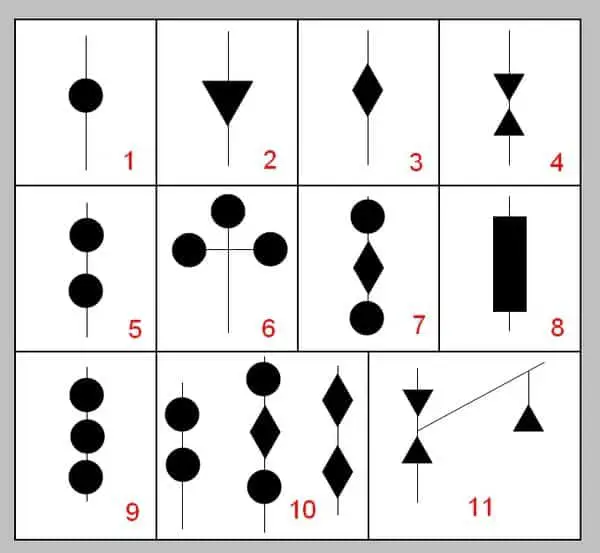
Most of what we’ve covered up to this point has been under the conditions of being underway or at anchor during the evening.
However, arguably more vessels will be out during the day than at night, so it’s important to be aware of other forms of visual communication such as day shapes.
During the day there’s little need for lights to communicate visually to other vessels, which is why we use shapes instead. There are a number of different shapes that take the form of circles, squares, triangles, and more that communicate different messages.
While there are a lot of different day shapes to consider, I want to cover the most common you’ll likely see while out on the water.
Being able to pinpoint a vessel, whether sailing or power-driven, that’s anchored during the day is rather straight forward as you should see a large black sphere hanging between the tip of the vessel’s mast to the fore of the vessel.
This single black sphere should be the size of a basketball and will be attached in the middle of a line.
Motoring and Sailing
If you’re out sailing and have your engine running to help boost your speed, you’ll need to ensure that you have a black, upside-down triangle attached to the middle of your forestay.
Just like the black sphere used to illustrate that your vessel is anchored, your sailboat should have the upside triangle in the same location. It’s important to note that this is only required for vessels that are 12 meters (39 feet) or greater in size.
Diving Operations
If you like to go freediving, scuba diving, or snorkeling, you’ll want to be sure to use the proper diving day shape.
Whether you’re on a small or medium sized vessel, make sure you put up the correct flag at the top of the mast. The most commonly used flag is blue and white while another flag is red with a white slash from one corner to another.
One of the worst situations you can find yourself or anyone else in while out sailing is ending up aground.
If this situation ever occurs, there should be three black spheres, just like the one you would use when anchored out, attached to the top of the mast in a vertical column. It’s important to note that this is only required for vessels that are 12 meters (39 feet) or greater in size.
Not Under Command
There will be times when vessels out on the water won’t be under command, which means you should be aware of this so you can make sure you can avoid them on your course.
Just like a vessel that’s run aground, you should see black spheres lined up vertically at the top of the mast, but instead of three spheres there should only be two. Again, this is only required for vessels that are 12 meters (39 feet) or greater in size.
Restricted Maneuverability
Some vessels can find themselves in situations that simply restrict their ability to maneuver, so being able to put that inability on full display to the rest of the vessels out on the water is rather important.
By putting a black, diamond-shaped object in between two black spheres in a vertical column at the top of the mast, this message is illustrated successfully. Similar to other day shapes, you’ll only find this on vessels that are 12 meters (or 39 feet) or greater in size.
Fishing and Trawling
Fishing is one of the oldest industries in the world and there’s no doubt that you’ll eventually find a vessel fishing and towing along a net.
Whenever a vessel is trawling, you should find two triangle shapes pointing at each other in a vertical column hoisted as high as possible.
There are also a few strange looking flags you’ll find being hoisted in the same location whenever a fishing vessel is either shooting nets, hauling nets, or their nets are caught on the seabed.
Buoys and Marks

Being able to safely navigate around other vessels out on the water is, of course, extremely important, but it’s also important to be observant of non-vessel objects that could get in your sailboat’s way.
Circumventing spots that are potentially dangerous comes first by being able to recognize the various buoys and marks on the water.
There are internationally agreed sets of buoys and marks that ensure safety for traveling vessels all over the world. Thanks to the International Association of Lighthouse Authorities (IALA), we have two major systems to abide by located in two different worldwide regions.
Fortunately, these two regions — Region A and B — have very few impactful differences. Region A (IALA A) covers all of Europe and pretty much the rest of the world while Region B (IALA B) covers the USA, Japan, The Philippines, and Korea.
Major Difference Between IALA A and IALA B
The major difference between the two regions is regarding the buoys which define which side of a channel the vessels should be traveling on.
For example, IALA B has red lights, marks, and/or buoys on the starboard (right) side of a channel when entering a place such as a harbor while under IALA A standards the red lights, marks, and/or buoys are on the port (left) side of a channel when entering.
These are known as lateral or channel marks and define the limits of the water that navigable across a channel.
Port and Starboard Marks
When it comes to buoys and marks that specify the port or starboard side of an object, the port side of an object is red and the starboard side of an object is green.
This is the same for when you’re sailing your boat when it comes to the foremost red and green lights on your vessel.
In regards to specific shapes of port and starboard marks, under the IALA B standards, port marks take the shape of a cone while the starboard marks take the shape of a can.
Safe Water Marks
A Safe Water Mark, also known as a Fairway buoy, is a red and white vertically striped object usually taking the shape of a sphere, pillar, or spar with a red ball on the top for the non-sphere shapes.
This mark usually indicates that you’re entering open and deep waters which should continue as you sail onwards.
Isolated Danger Marks
Having a mark named Isolated Danger Mark isn’t too comforting when you first read it, but it’s one of the most useful marks you’ll find. As the name implies, this mark indicates a location of potential hazard that should be avoided at all costs.
The Isolated Danger Mark should always be red and black horizontal bands with two black balls at the top. It should also have a flashing white light that comes in groups of two flashes.
Special Marks
A Special Mark can carry a number of different meanings, but it’s always displayed in the same way. Special Marks should be completely yellow and have an ‘X’ on the top of it.
A yellow flashing light is also found on the top of the Special Mark and can be seen quite distinctly at night. The reason you could find yourself near a Special Mark is due to it indicating
- Water skiing areas
- Anchorage areas
- Mooring areas
- Waiting areas
- Marine farms
- Historic wrecks
- Protected areas
- Sewerage pipes
- Submarine cables
Cardinal Buoyage System
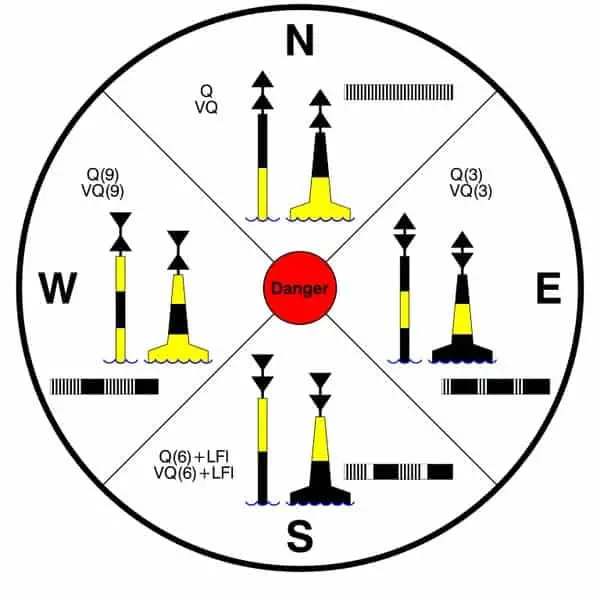
Another useful set of buoys is based on the Cardinal Buoyage System, which was designed to indicate the safe passage around a potentially hazardous area.
These Cardinal Marks are signaling to vessels that there’s an area that’s shallow, contains sunken objects, reefs, rocks, or something else.
By observing the Cardinal Marks, you’ll be able to tell where not to go based on their explicit placement. For example, if you see a North Cardinal Mark, your vessel can safely pass the hazard by traveling North of that marker.
The same goes for South, East, and West Cardinal Marks. Cardinal Marks are always black and yellow horizontally striped pillars.
The North Cardinal Mark is black on the top, yellow on the bottom, has two vertical triangles pointing up, and has a continuously flashing white light on the top.
The South Cardinal Mark is yellow on the top, black on the bottom, has two vertical triangles pointing down, and has a flashing white light on the top that flashes in groups of six followed by one long flash.
The East Cardinal Mark is black with a yellow stripe in the middle, has two vertical triangles pointing outward, and has a flashing white light on the top that flashes in groups of three.
The West Cardinal Mark is yellow with a black stripe in the middle, has two vertical triangles pointing inward, and has a flashing white light on the top that flashes in groups of nine.
Sound Signals
There may be times when you’re out sailing and the visibility is just too poor to be able to point out any buoys, flags, or shapes of any kind. Thankfully, we have light signals that can help us out when it comes to navigation around other vessels and potentially hazardous areas.
However, there may be times when we need to communicate more direct messages much more quickly. If VHF is not an option under these conditions, the use of sound signals is your go-to solution.
“You Are Running into Danger”
There are plenty of useful sound signals to be able to send out as well as recognize when the moment’s right, but there’s one that everyone should be aware of.
When someone yells “heads up!”, it’s likely you’re going to cover your head as soon as possible. When out on the water, the “heads up” can come in the form of two distinct sounds.
When someone is attempting to warn you that “you are running into danger” or you need to inform another vessel of this, you’ll need to know the Morse code word for ‘U’.
The word ‘U’ is presented as a one-second horn blast followed by a 4-6 second horn blast. You can think of this as a short blast followed by a long blast.
In all likeliness, you’ll be the one hearing this sound signal as opposed to you sending it out. Most of the time when this sound signal is used, it’s coming from much larger vessels such as oil rigs, cruise ships, and other vessels of similar size.
Poor Visibility Sound Signals
There are a few sound signals that you should keep in mind when visibility becomes poor while out on the water. Some of the most important include:
- Power underway, making way: one 4-6 second blast and a 2-minute wait.
- Power underway, not making way: two 4-6 second blasts and a 2-minute wait.
- V essel sailing, fishing, not under command, towing, maneuverability restricted: one 4-6 second blast, two 1 second blasts, and a 2-minute wait.
- Last manned vessel of tow: one 4-6 second blast, three 1 second blasts, and a 2-minute wait.
- Warning from vessel at anchor: one 1 second blast, one 4-6 second blast, and one 1 second blast.
- Plot vessel on duty: four 1 second blasts.
- Vessel at anchor: 5 seconds of rapid bell ringing and a 1-minute wait.
- Vessel aground: 3 short bell rings, 5 seconds of rapid bell ringing, and 3 short bell rings.
Maneuvering and Warning Sound Signals
If you ever find yourself communicating with another vessel using sound signals, you’ll definitely need to confirm with one another who’s going to do what so as to avoid the risk of a collision.
Here are some of the most important sound signals you can use to communicate with other vessels.
- I’m altering course to starboard: one 1 second blast.
- I’m altering course to port: two 1 second blasts.
- I’m operating stern propulsion: three 1 second blasts.
- I don’t understand your intentions! I doubt you’re taking sufficient action to avoid collision: five or more 1-second blasts.
- I intend to overtake on your starboard side: two 4-6 second blasts and one 1 second blast.
- I intend to overtake on your port side: two 4-6 second blasts and two 1 second blasts.
- Agreement by overtaken vessel: one 4-6 second blast, one 1 second blast, one 4-6 second blast, and one 1 second blast.
- Approaching blind bend in channel: one 4-6 second blast.
- Reply from vessel on other side of bend: one 4-6 second blast.
Get the very best sailing stuff straight to your inbox
Nomadic sailing.
At Nomadic Sailing, we're all about helping the community learn all there is to know about sailing. From learning how to sail to popular and lesser-known destinations to essential sailing gear and more.
Quick Links
Business address.
1200 Fourth Street #1141 Key West, FL 33040 United States
Copyright © 2024 Nomadic Sailing. All rights reserved. Nomadic Sailing is a participant in the Amazon Services LLC Associates Program, an affiliate advertising program designed to provide a means to earn fees by linking to Amazon.com and affiliated sites.
Writing Modules
Engage students in a comprehensive and diverse digital writing experience
Essay Writing
Essay Writing is appropriate for students of all ages. The teacher supports the student writing process by engaging them in deliberate planning that includes a feedback cycle. Students then apply their improved/approved plan to write their best essay draft. Students use feedback in the recursive process to grow!

Book Report
Teachers can choose from a variety of templates to support student writing. Teachers can assign or allow free choice books to be read. Students engage with the book by taking notes and filling in the supportive template. Grow student writing by engaging in a rubric-structured feedback cycle.
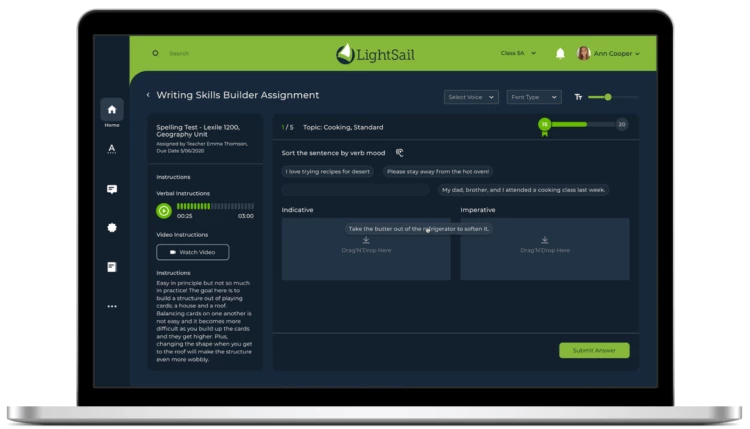
Writing Skills Builder
Using the Writing Skills Builder, parents can choose from a variety of grade-level appropriate questions and create customized language practice assignments for their student.

Informal Writing Bursts
Informal Writing Bursts are no-risk writing opportunities to foster a love of language, creativity, fun, and 21st century writing. A few well-loved Burst formats include Tweets, social media posts, conversations, and hashtags.
Vocabulary Assignments
Grow student vocabulary and comprehension with Cloze and Spelling Bee embedded assessments
Vocabulary Assessments
The teacher can create personal vocabulary assessments from words their child spelled incorrectly in Spelling Bee, asked for the definition of while reading, and/or missed while answering a Cloze assessment. The teacher can also choose what questions the child is asked about each word. What's better than differentiation? Customization.
Spelling Bee
Using a Lexile-aligned word list from the most recently read Power Texts, students receive 5 Spelling Bee words to practice before an assessment. To celebrate student growth, Badges are awarded for a strong Spelling Bee score.
Students receive a second chance on Cloze (fill-in-the-blank) assessments they missed. Word Work serves as a personalized vocbulary acquisition tool.
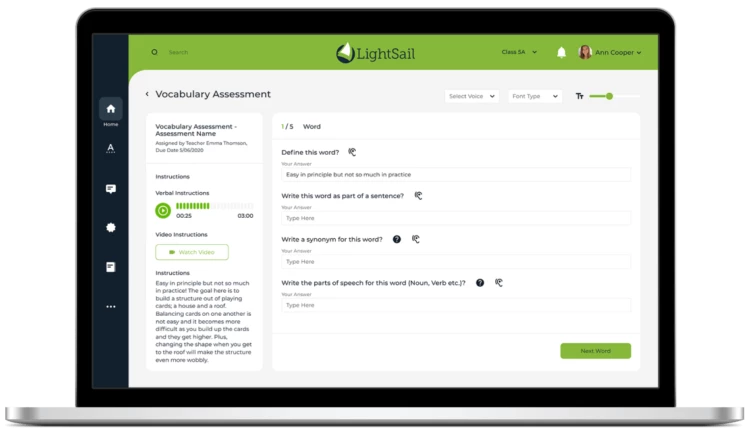
fluency Assessments
Fluency Assessments grow student reading speed, accuracy and prosody with performance feedback
Help students develop their oral fluency skills by assigning a passage for them to read aloud showing their ability to decode, retell the story and track their words correct per minute (WCPM) rate.
Speaking Assignment
Extend student speaking skills using Speaking Assignments. Teacher instructions and students' responses are supported in multi-modal writing and audio options. Feedback is provided using template or custom rubric criteria.
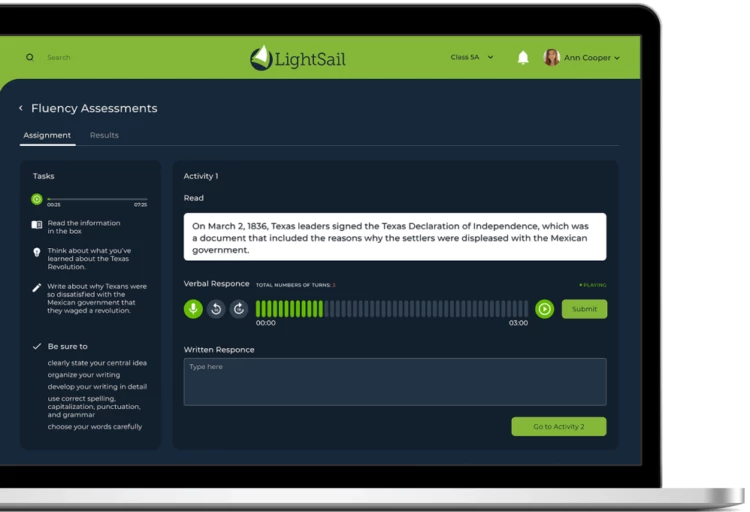
SUPPORT GROWING READERS

Let’s Take a Tour
Take a look at what lightsail has to offer. watch our product tour video..

Excellent content shouldn't come at a high price. That's why The LightSail Library is free for all of our schools. Through partnerships with leading content providers like News For Kids and Antares Reading™, LightSail gives students and educators access to thousands of outstanding fiction and nonfiction texts – at no additional cost and with unlimited copies.
The LightSail Library contains texts for students from grades K-12 written across a wide range of Lexile measures. These texts are embedded with assessments and cover a variety of subject matter. Now all students can discover who they are as readers through a broad and appealing library filled with great texts.
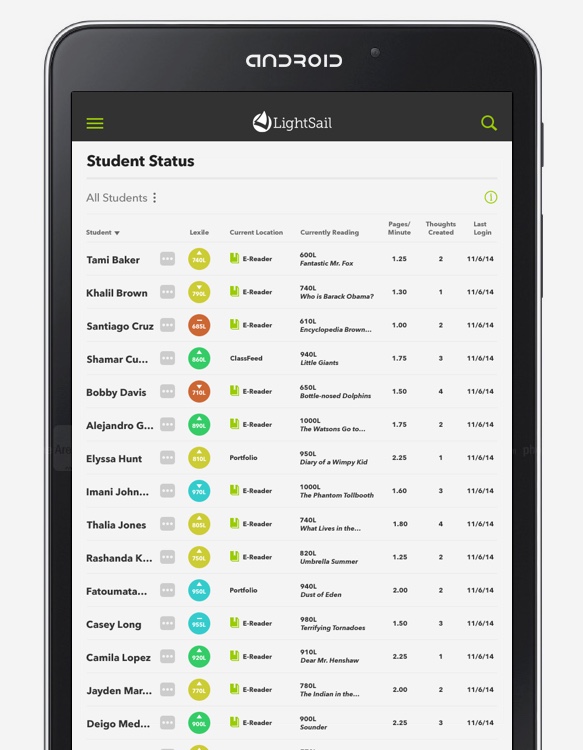
Progress monitoring is embedded into daily practice in a natural way. Students answer multiple-choice, written-response, and Cloze assessments throughout each text. As student ability grows, LightSail tracks achievement and updates the selections in each reader’s library – that way, students are always reading just right texts.
LightSail’s educators have also built several key motivators into the app! Students can track their progress against individual reading goals, check their Lexile scores and the number of texts they’ve completed and show off their achievement badges – all via their personal data dashboard. Readers can also chat with peers and teachers during the reading experience using LightSail’s in-app social network.

Starting with an initial adaptive assessment, LightSail automatically creates personalized libraries for each of your students based on their reading abilities. These libraries adapt as students grow, ensuring they are already reading "just right" books.
In order to get your digital program off the ground, LightSail comes pre-loaded with over 6,000 assessed texts for free. As your school's content needs grow, and you are ready to expand your digital library, LightSail provides access to over 4,500+ premium books at a wide variety of interests and reading levels.
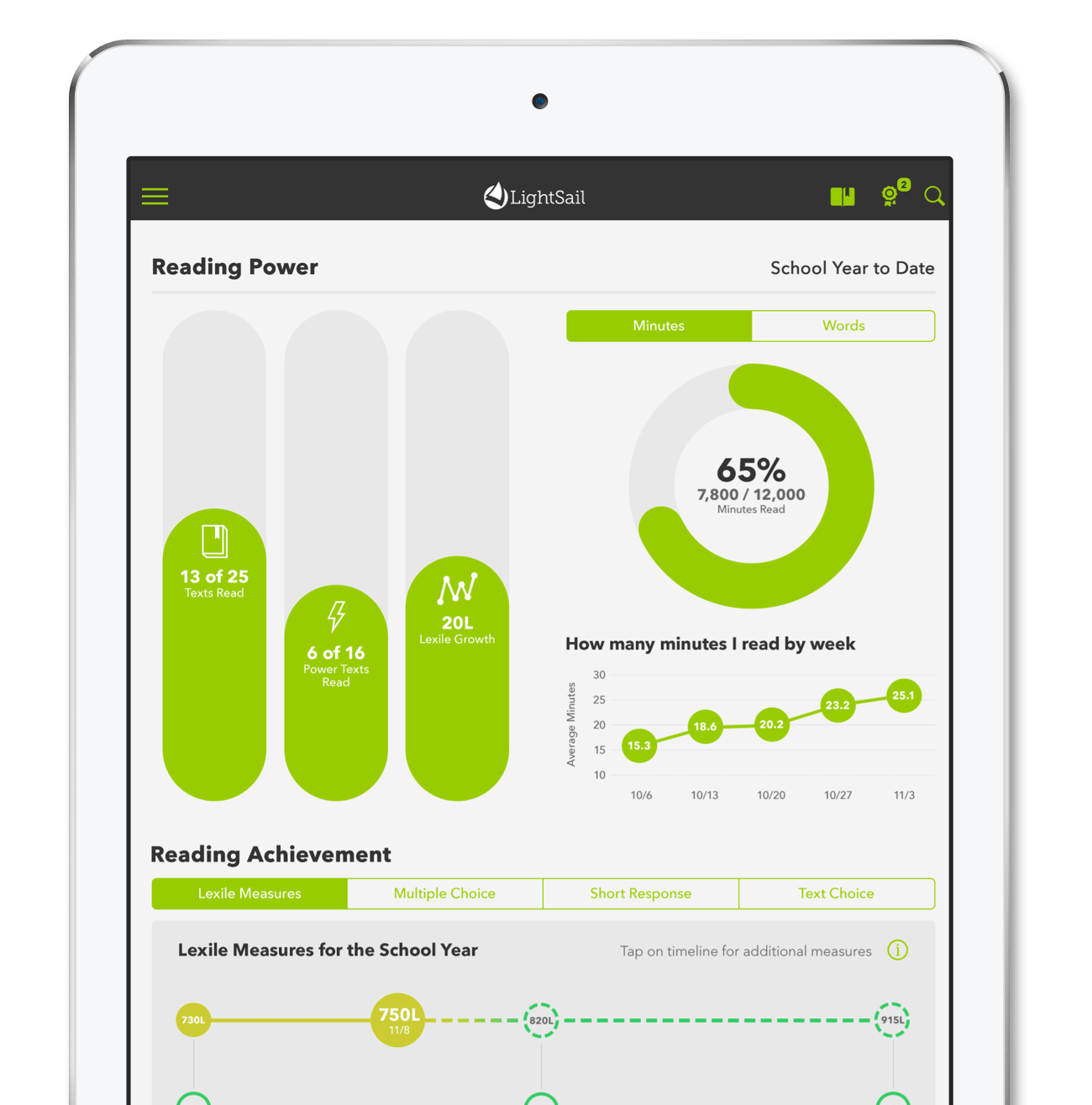
LightSail was designed to tackle the logistical burden of differentiation in the ELA classroom, so teachers can focus on what really matters – targeted instruction.
Educators get real-time access to meaningful data about student reading behavior, comprehension and growth. With access to student annotations and dashboards that show both individual as well as class performance, teachers are able to fine-tune instruction in ways that were rarely possible before.
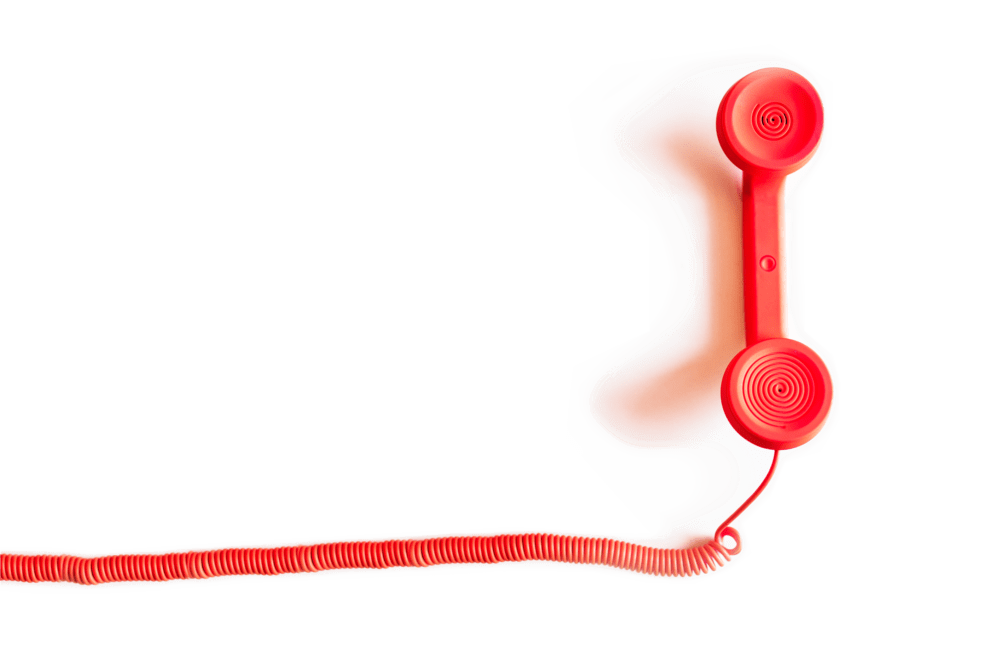
Great support is a key factor in the success of any technology you bring into your classroom. Your digital transition takes you into new territory and we want to make sure you have everything you need.
LightSail is invested in your success, so we've got you covered every step of the way. Even prior to launch, your LightSail support team is there to get you off to a great start and we continue to be available to keep you going all year long.

LightSail’s SummerSail Reading Program provided at-risk middle school students with access to LightSail for seven weeks in an effort to combat “summer slide” — a phenomenon by which economically disadvantaged children rarely read during the summer as compared to their more advantaged peers.
This research study evaluates the program’s impact and outcomes for 280 students from in a large urban school district.
- Canoe Sailing
- Kayak Sailing
- Dinghy Sailing
- Snark Car-Topping Sailboats
- Canoe Stabilizers (Outriggers)
- Rowboat & Porta-Bote Sailing
- Parts and Accessories
- Boats (without sail rigs)
- Motor Mounts
- Portage Carts
- Small Outboards
- Specialty Boats
- Shopping Guide
- Testimonials

Snark Sailboats: Super Light, Super Fun!
More people have learned to sail on Snark boats than any other boat. Easy to sail, very portable, durable, and affordable!
This is the page for ordering a boat. See add-to-cart links in left column below.
Boat is shipped to your door. Shipping is put out to bid after you order. Expect $400 - $1000. You can cancel if bids are too high. Or you can drive to the factory (near Toledo, OH) and pick up yourself after ordering and paying.
Be patient. The process will take weeks at least.
Replacement Sails Parts
Limited Availability (updated July 26, 2023): Snarks are not yet back in production, but they have some factory seconds on hand at the factory that they are slowly going through to pick out the ones that are good enough to sell. The price is $1950 for a Sunflower or $1550 for a Super Snark, shipping not included. Only order if you will be patient and kind to us as we do our best to pry these boats loose at the factory, arrange shipping and get them out to customers. You will be charged only a refundable $100 deposit at this time when you click "Buy Now" below. The minor defect(s) that make your boat a second will be described to you before shipment and you will have the option to decline. The defects are cosmetic and minor. We've had no complaints about them.
New production is going to resume someday, but nobody knows when -- as in what year. The factory continues to take baby steps in that direction, buying parts and materials and getting production machinery ready.
We have many other portable sailboats available for your consideration. Please click here .
*Snark Boat Terms: Not returnable. Defects covered by manufacturer's warranty. Delivery dates are estimates only. Do not sign for your boat until you have determined there is no shipping damage. Refuse delivery if damaged
Sail Swap! Only at SailboatsToGo: Visit our Sail Swap page to select your sail if you want to when buying a boat. Or, for additional cost, y ou can upgrade to a white dacron sail or one of our premium Neil Pryde sails . Sail swap and white dacron upgrade offers apply only to new purchases of Super Snark or Sunflower from SailboatsToGo. .
“Snarks are so simple and fun to sail, but teach us worlds about working boat and wind together. I will admit, however, my favorite thing about the Snark is that I can decide to go for a sail on a lake 10 minutes from my door, and 15 minutes later I'm on the water. It is not a big event to go- so I go often.” John B. (Nov. 2010)
Why you should buy your Super Snark or Sunflower from SailboatsToGo.com: At SailboatsToGo, LLC all customer contct is handled personally by the owners, Jim Luckett and Rob Michael. You know you will get good advice, accurate information and expert service, because Jim and Rob are sailing enthusiasts, first and foremost. "Portable sailboats are my passion!" -- Jim Luckett
Snark Upgrades and Accessories
Snark Sailboat History
- Gift Certificate
- --> Login or Sign Up

Shop by Category
- All LED Replacement Bulbs
- BA15S/BA15D Bayonets (1141/1142/1156)
- BAY15D Indexed Bayonet (1157)
- BA9S Miniature Bayonet
- Edison - Screw-Type
- Festoon (SV8.5)
- Fluorescent Style
- MR11 & MR16
- PAR 36 Sealed-Beams
- Socket Adapters
- Boat Specific LEDs
- All LED Fixtures
- Interior LED Fixtures
- Exterior LED Fixtures
- All Navigation Lights
- Nav Lights By Function
- Economy Series LED Navigation Lights
- USCG Certified Navigation Lights
- LED Retrofit Bulbs for Nav Lights
- Portable LEDs & Flashlights
- All Cruising Necessities
- Comfortable Cruising Accessories
- Wireless Headset Communicators
- Chemicals and Compounds
- All Marine Wind Generators
- MarineKinetix MK4+ Wind Generator
- Wind Generator Installation Accessories
- Spare & Replacement Parts
- Marine Energy Products
- All Wiring & Electrical
- Marine Wire & Accessories
- Power Supplies & Voltage Converters
- LED Dimmers & Switches
- Wireless Remote Controls
- Dusk-to-Dawn Photocells
- 12VDC Device Chargers
- All Cristec / Scheiber OEM
- Cristec Products
- Scheiber Products
- Mantus Anchors
Shop by Brand
- MarineKinetix
- Cruising Solutions
- Sirius Signal
- View all Brands
- Navigation Lights
All-Around LED Anchor Light for Sailboat Mast - Series 40 Type <20M
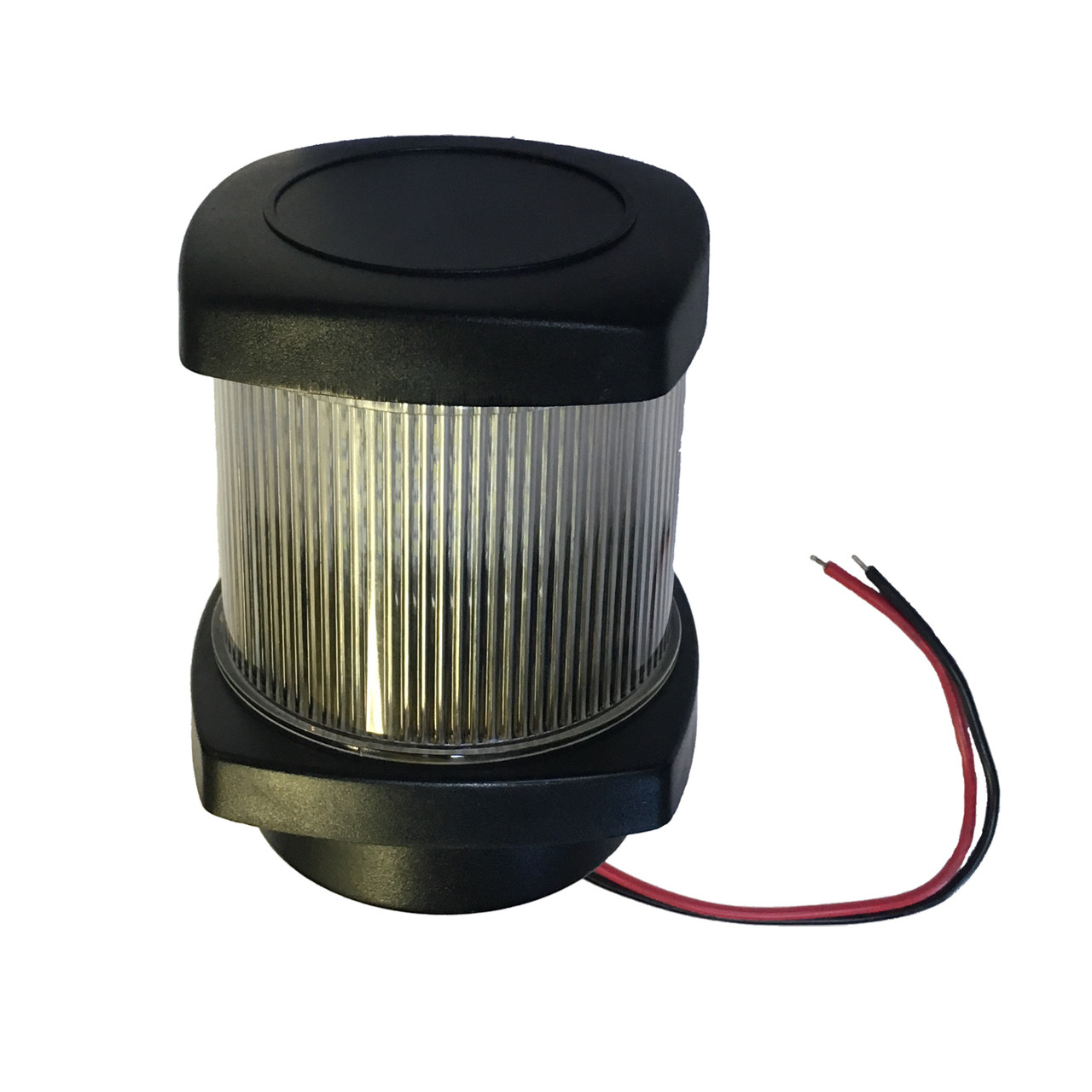
- Create New Wish List
- Similar Products
Product Description
An economical 2NM LED All-Around Anchor Light fixture navigation light intended to be mounted on the top of the mast on larger sailboats. It replaces the Aqua Signal Series 40 type anchor lights, as it is of similar size and height.
Prefitted with a user-replaceable Marinebeam constant-current 10-30VDC BAY15d high-output LED bulb and 8" of marine tinned wire - ready to mount. The wiring connection can be made inside the fixture via the internal spade terminal connections, or by connecting to the included external wire pigtails.
The height is 4-3/8" and the base diameter is 3". Mounted with 4 screws or bolts (not included) to any flat surface.
You won't find a brighter LED fixture with a longer life for this price.
Made of UV resistant plastic with brass internals. O-ring sealed cover.
- Draws 0.18A at 12VDC
- Constant-Current LED driver
- Replaceable 30,000 hour LED bulb
- Cool White high-intensity LED output (>2nm visibility)
- Candela output exceeds COLREG 72 requirements for boats up to 20M
- 360 degree visibility
- Tinned marine wiring and o-ring sealed cover
- 2 year warranty
Product Videos
Custom field, product reviews, write a review.

1 Review Hide Reviews Show Reviews
Posted by Molly Mullins on 14th Sep 2023
Works well, easy installation.
Recommended

sku: N1-360-CLR
Led all-around anchor light, sku: n2-360-fld, folding all-round anchor light for boats < 20m.

sku: N4-TRI-124
Led tri-color and all-around anchor navigation stack light.
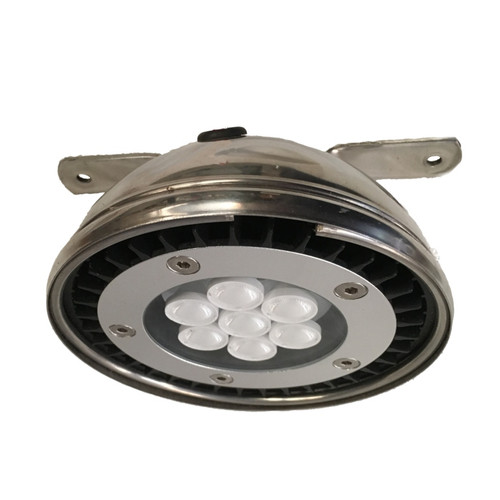
Stainless Steel PAR36 LED Spreader Light for sailboats

Light Air Sails (A Complete Guide)

Last Updated by
Daniel Wade
June 15, 2022
Light air sails are useful for calm conditions when the jib and mainsail alone aren't sufficient.
In this article, we'll cover the uses and benefits of light air sails, along with when to use them. We’ll also cover the different types of light air sails and their characteristics, along with how to choose the right sail in a variety of conditions.
Light air sails, such as spinnakers and genoas, are large, lightweight headsails designed to efficiently capture the wind on days with calm weather and winds under 20 knots. According to some experts, light air sails can propel boats up to 50% faster in light winds.
This complete guide uses information sourced from sailing authorities such as SAIL magazine along with advice from sail manufacturers and experienced sailboat owners.
Table of contents
What is a Light Air Sail?
A light air sail is a large unsupported headsail designed to increase the speed of vessels sailing in light winds. Light air sails resemble parachutes, and they work in a similar way. Light air sails are attached to the boat, and some aren't supported by a boom or other structural device. They catch the wind and pull the boat along from the front.
Light air sails are akin to wind-powered tow lines. They're often significantly larger than the jib , and they are usually constructed from lighter and less durable material. This normally isn't a significant issue, as sailors rarely deploy light air sails when high winds would pose a risk to them.
Light air sails are all about efficiency. A light air sail can basically double the effective size of your sail plan without adding to your hull length or mast height. This is why, when using a light air sail, it's not uncommon for sailors to achieve nearly double the speed they had before deploying.
Light air sails are often tricky to use and get used to. This is because of their size and how they rig up to the boat. They're not as structurally supported as mainsails, meaning you have to pay careful attention to the wind direction and your heading before deploying one. The same rule applies while you're using a light air sail, as it's easy to get your sail tangled in the rigging or torn.
Light Air Sail Benefits
Speed is the primary benefit of using a light air sail. As we mentioned previously, a light air sail can help you nearly double your speed in light winds. This, in turn, can help you save fuel and reach your destination twice as fast.
As you might expect, light air sails are also popular with racing crews who use them in much higher winds. Deploying one at a regatta is a guaranteed boost if the conditions are ideal, and virtually all racing sailboats have one aboard.
That said, racing isn't the only practical application of light air sails. These useful sails can make it possible to go sailing on warm, calm summer days when the wind wouldn't normally be strong enough to get you anywhere. With a light air sail, you have access to the water on days with the most pleasant weather.
Eliminate your Fuel Bill with a Light Air sail
The prospect of greatly reducing your fuel bill is attractive, and a light air sail is the most practical way to do it. And while it's true that it's easier to just lire up the engine, learning to sail with a light air sail can save money and add a new rewarding aspect to the sailing experience,
But how much money can you actually save with a light air sail? The answer is quite a lot. A light air sail works for free all day, and it can save many engine hours on light-wind days.
Is It Hard to Use a Light Air Sail?
Light air sails appear to be intimidating, especially to novice sailors. It's true that light air sails can be tricky to set up and use, but they're not significantly more frustrating than anything else on a sailboat. If you can learn to sail without one proficiently, then you can learn to sail with light air sails.
Types of Light Air Sails
There are many types of light air sail arrangements out there, and each has its own benefits and drawbacks. The most common types of light air headsails are the spinnaker and the genoa. First, we'll focus on the spinnaker.
A spinnaker is the type of sail most people think of when they picture a sailboat gliding along in light winds. Spinnakers are a lot like parachutes, and they are up ahead of the jib and often over the water.
The genoa is a traditional type of light air sail. This sail is almost always much smaller than a spinnaker. It functions as a second jib and increases the sail area of your existing sail plan. At one point, many sailboats included a genoa as an integral part of the sail plan. While not as common anymore, genoa sails are still a viable option for light wind sailing .
Spinnakers and genoas are themselves broad categories of sails. They each have several derivatives, and it's important to know the difference. Next, we'll go over the most common types of genoa and spinnaker light air sails. We'll also provide detailed information on each, so you can choose the right sail, plan for your area, and sailboat.
Genoa Types and Characteristics
If laid flat on the ground, it'd be easy to confuse a genoa for a jib. They rig up in the same place, and they perform similar functions. A genoa is a type of headsail that extends further aft than a jib, effectively increasing the sail area of your boat.
A genoa can perform the same function as a jib. This is especially true if you utilize a roller-furling mechanism. Anyone who is familiar with how to rig and reef a jib can comfortably handle a genoa.
Additionally, a genoa can be used with another headsail, increasing your light wind sailing capabilities further. One of the drawbacks to the genoa (when compared to the spinnaker) is that the genoa adds a comparatively small amount of area to the sail plan. This isn't always a drawback, as it allows you to use a genoa in a much wider range of wind conditions.
Some vessels sail almost exclusively with a genoa, as it's a versatile sail that's relatively easy to manage. If you want to increase your light air performance without drastically altering your sail plan, then consider adding a genoa to your headsail collection.
Parts of a Genoa
The parts of a genoa are very similar to the parts of a jib. After all, a genoa is really just an elongated jib. The base of a genoa is called the foot, and it runs forward to the tack and aft to the clew.
From the clew corner, the leech runs vertically to the top point of the sail, which is known as the head. The longest side of the genoa is called the luff, and it runs from the head to the tack.
The forestay, which is part of the sailboat's standing rigging, runs right along the luff of the genoa. The head of the genoa attaches to the mast, and the sheet attaches to the clew. The tack mounts to the bow or to the end of the bowsprit. Rigging a genoa gets a bit more complicated if you're using it with another light air sail, such as a spinnaker.
Spinnaker Types and Characteristics
A spinnaker is a lightweight parachute-like sail designed for light wind sailing . The spinnaker is primarily useful for downwind sailing, and it isn't structurally supported by anything other than a spinnaker pole and rigging. A spinnaker pole isn't a boom, despite resembling one.
The spinnaker pole holds out one end of the sail and serves as a pivot point. Thus, this feature keeps the spinnaker from being totally unsupported. However, not all spinnakers use poles.
Spinnakers work best when the wind is 90 to 180 degrees off the bow. Spinnakers are also known by other names, the most common of which is "chute" or "kite."
There are several distinct types of spinnaker sails. The most common types are symmetrical spinnakers, asymmetrical spinnakers, and cruising chutes. The terms "symmetrical" and "asymmetrical" refer to how the spinnaker is used and how it is shaped.
Parts of a Spinnaker
Spinnakers are complex sails with many parts. They mount to the mast at the head and to a spinnaker pole at the tack in the bottom port side corner. The control lines connect to the tack in the port corner and the clew in the starboard corner.
The edge of the sail that runs from the clew to the head is called the leech, and the edge that runs from the tack to the head is called the luff. Note that the "sheet" on the port side is actually called the afterguy, as an additional sheet called the lazy spinnaker sheet is sometimes also used.
A line called the foreguy runs from the center of the spinnaker pole to the base of the mast. Another line called the topping lift runs from the spinnaker pole to the upper part of the mast.
If used without a spinnaker pole, rigging a spinnaker can be quite simple. Using this method, you can rig the tack line to the bow and run it to the cockpit and draw the sheet all the way aft. Some spinnakers, known as parasailers, are specifically designed to be run this way.
Asymmetrical Spinnakers
Asymmetrical spinnakers are a type of light air sail that works almost like a combination between a spinnaker and a jib. It is flown from a pole and pulls primarily to one side. In other words, it powers the vessel on a one-sided asymmetrical axis.
Asymmetrical spinnakers are designed to provide the most power when sailing on a broad reach rather than directly downwind. This type of sail isn't the classic spinnaker. Rather, it became popular during the middle of the 20th century on fast racing craft.
Asymmetrical spinnakers have two sheets attached to the corners of the sail. The sheet layout is similar to a traditional jib, and it's relatively easy to control if you're experienced with headsails.
Symmetrical Spinnakers
Symmetrical spinnakers are what you think of when you hear the term "classic spinnaker." This type of spinnaker has been around for a very long time, and it's probably the most popular type of light air sail ever used.
Symmetrical spinnakers are a lot like parachutes, and they're sometimes unsupported by anything other than rigging. They fill with wind and bow out past the jib, and they're used exclusively for downwind sailing.
Handling asymmetrical spinnakers takes some care, as they're more difficult to control than standard headsails.
Cruising Chute
The cruising chute is a variety of asymmetrical spinnaker that's common on long-range bluewater sailing vessels. It's designed to be easy to handle, which is advantageous on sailboats with few crew members. Cruising chutes are preferred by single-handed sailors as well due to their simplicity.
Like the Code 0 light air sail, gennakers are a recent development that came about purely from practical experience. Fundamentally, a gennaker is a cross between a genoa and a spinnaker. It's based on an obscure 1870s sail design known as a "gollywhomper." Like the Code 0 sail, the gennaker is used primarily for racing.
This combination rigs up like a spinnaker, but the tack attaches to the bowsprit or the hull like a genoa. It's an asymmetrical sail, and it reaches greater efficiency at tighter angles. These combination sails are most useful when downwind in a run or a beam reach.
For cruising boats, a spinnaker or genoa will probably be more useful than a gennaker. These sails work optimally on precise, lightweight racing craft, and they're comparatively hard to come by. That said, some long-haul sailors have experimented with gennakers and report excellent results.
Symmetrical Spinnaker Designations
Spinnakers have designations that specify the kinds of conditions in which they can be used. These conditions range from light air to extreme air.
- 1S: Light Air Reaching
- 2S: Light Air Running
- 3S: Heavy Air Reaching
- 4S: heavy Air Running
- 5S: Extreme Air
Spinnaker designations also specify how the sail is to be used. In terms of point of sail, reaching spinnakers are used when the wind comes from some side angle, whereas running spinnakers are used when pointing directly downwind.
Spinnaker designations also specify how thick the sail material is. Light air spinnakers (1S and 2S) are made of thin, ultralight material, whereas heavy wind (3S and 4S) and extreme wind (5S) are made of more durable cloth.
Weight designation is important, as light winds may not provide the "lift" necessary to support a heavy spinnaker. Also, heavy wind can tear light air spinnakers and cause maneuverability issues.
Asymmetrical Spinnaker Designations
Like symmetrical spinnakers, asymmetrical spinnakers also have strength and wind speed designations. They follow the same basic rules as symmetrical spinnakers, with the exception of new 'Code 0° asymmetrical spinnakers.
- 1A: Light Air Reaching
- 2A: Light Air Running
- 3A: Heavy Air Reaching
- 4A: heavy Air Running
- 5A: Extreme Wind
- Code 0: Ultra Reaching Light Air
Code 0 spinnakers are essentially oversized genoas, but the IRC rates them as spinnakers anyway. Code 0 asymmetrical spinnakers are used for light air reaching. These new super- genoa sails are extremely efficient, and they've become a practical light air alternative to both traditional spinnakers and genoas.
Symmetrical vs. Asymmetrical Spinnakers
What are the advantages and disadvantages of each spinnaker type, and when should you use them? Different conditions call for different light air sails, which is why many sailors carry one of each aboard.
Some sailors choose asymmetrical spinnakers for reaching and exclusively use symmetrical spinnakers for running. This strategy, while not the only option, makes sense because symmetrical spinnakers are tricky, but they work well in straight downwind runs.
However, conditions other than the point of sail can play a more important part in the decision. Asymmetrical spinnakers have a clear advantage on short-handed sailing craft, as they're much easier to control with fewer people.
Asymmetrical spinnakers are also a popular choice for fast racing boats. Heavier displacement hull vessels, which are primarily used for offshore cruising, often opt for traditional symmetrical spinnakers. If there's room for a straight downwind run, heavy boats can achieve greater speed with a more powerful symmetrical spinnaker.
Spinnaker Poles
A spinnaker pole is simply a long, thin spar used to support one corner of a spinnaker. They can also be used on jabs and genoas, which turns them into a viable spinnaker alternative in light winds. Spinnaker poles attach to the mast and the tack of the sail.
When sailing in light winds, you will often come across boats with the spinnaker, jib, or genoa poled out. The pole makes it much easier to control the shape of the sail when the wind isn't strong; enough to shape it properly.
The term "poling out" refers to the practice of using a spar to fix the position of a normally "loose" headsail. Poling out sails is most useful when running directly downwind.
Many expert sailors recommend keeping a headsail spar on board even if you don't carry a spinnaker. It's a multi-purpose spar that's useful in a wide range of sailing conditions .
But do you need a spinnaker pole to use a spinnaker? In most cases, the answer is no. A pole isn't necessary to fly a light air sail, but it can make the process a lot easier and more controllable.
How Much do Light Air Sails Cost?
Sails are one of the more expensive aspects of sailing, and the total cost of a set of light air sails varies. Sail cost depends on the size of your boat, the type of sail, along with the material size and thickness. Some light air sails are mass-produced, while others are made by hand in specially sailmaking shops.
Pre-manufactured spinnakers are available for the most popular production cruising boats, such as those made by Catalina, O'Day, and Islander. For example, a light air cruising spinnaker for a Catalina 25 costs about $700 new. Standard "no-frills" cruising spinnakers usually cost between $500 and $2,000 for 20-foot to 40-foot sailboats.
Genoas for typical cruising sailboats usually cost about the same, though name-brand sail upgrades can cost well over $2,000. Custom sails are the priciest option, and they cost anywhere from $1,000 to $5,000 or more. That said, custom sails are often higher quality than production canvas.
Parasailers
A parasailor is a close relative of a spinnaker, and the two are often visually confused. The parasailor is actually designed for use in heavy winds, unlike the spinnaker. In winds up to 40 knots, a parasailor can be used to generate lift and keep the bow from diving too deep into the waves.
Parasailers are designed primarily for downwind sailing. The parasailor is a version of asymmetrical spinnaker that's usually made of stronger material. Additionally, parasailers have a wing that stretches horizontally across them, which provides lift to the bow of the vessel.
Parasailers can also be used in light wind conditions, though they really come into their own when the wind blows just a bit more than the ideal speed for a standard spinnaker.
Topsails and Staysails
Traditional gaff-rigged sailboats can use genoas and spinnakers just like modern Bermuda-rigged vessels. However, gaff-rigged sailboats have additional sails in their light air arsenal.
One of the most common sails used by gaff boats in light winds is the topsail. Topsails are essentially a triangular piece of canvas designed to fill the gap between the gaff and the extended topmast.
Topsails don't have anywhere near the sail area of a spinnaker or a genoa, but they're useful in a wide range of light wind maneuvers because they add additional thrust to the existing sail arrangement.
Staysails, on the other hand, are smaller triangular headsails that are run just aft of the jib. On schooners, they can be used in conjunction with other light air sails, such as the fisherman sail. Staysails are common on gaff-rigged sailboats, and they're often used with a topsail deployed as well.
Spinnaker Wind Speeds
What's the ideal wind speed for spinnakers and similar light air sails? The answer depends on the type of boat and spinnaker in question, but we'll cover some general advice for typical cruising boats.
For most cruising sailboats, 15-knot winds are probably the upper limit for spinnaker use. Generally speaking, sustained winds of 20 knots or greater are too high to use a light air spinnaker safely or efficiently.
These rules change for racing boats, which often deploy heavy-duty spinnakers in sustained winds in excess of 40 knots. Heavy air spinnakers, colloquially known as "chicken kites," are usable in heavier wind conditions and can help sailors achieve higher speeds.
Heavy air spinnakers, such as those in the 5S (symmetrical) and 5A (asymmetrical) category, are safer to use in wind speeds exceeding 20 knots.
Can You Use a Spinnaker Without a Mainsail?
Many sailors wonder if they can use a spinnaker or a chute sail without a mainsail. Generally speaking, this isn't usually the best idea. The mainsail provides shelter for the spinnaker when rigging and lowering, which makes it easier and safer to handle.
Keep in mind that it's best to avoid jibing when hoisting or lowering the spinnaker. In fact, people want to avoid jibing so much that they often rig up a preventer line. The mainsail can be used to shield the spinnaker from the wind, which helps prevent issues.
Rigging a Preventer Line
Preventer lines help stop accidental jibes when sailing downwind. Shifting winds and improper handling are the most common causes, and an unintentional jibe can be a real headache when flying a spinnaker.
The purpose of a preventer line is to stop the boom or sail from shifting to the other side. A boom preventer, also known as a boom brake, is a common solution. A boom brake doesn't actually stop the boom from shifting; rather, it slows the normally violent motion to a manageable swing.
The other kind of preventer line is called a jibe preventer. This prevention line permanently affixes to the back of the boom and prevents it from moving at all. Both of these preventer line systems can be manipulated from the cockpit and adjusted as needed.
Related Articles
I've personally had thousands of questions about sailing and sailboats over the years. As I learn and experience sailing, and the community, I share the answers that work and make sense to me, here on Life of Sailing.
by this author
Most Recent

What Does "Sailing By The Lee" Mean?
October 3, 2023

The Best Sailing Schools And Programs: Reviews & Ratings
September 26, 2023
Important Legal Info
Lifeofsailing.com is a participant in the Amazon Services LLC Associates Program, an affiliate advertising program designed to provide a means for sites to earn advertising fees by advertising and linking to Amazon. This site also participates in other affiliate programs and is compensated for referring traffic and business to these companies.
Similar Posts

How To Choose The Right Sailing Instructor
August 16, 2023

Cost To Sail Around The World
May 16, 2023

Small Sailboat Sizes: A Complete Guide
October 30, 2022
Popular Posts

Best Liveaboard Catamaran Sailboats
December 28, 2023

Can a Novice Sail Around the World?
Elizabeth O'Malley

4 Best Electric Outboard Motors

How Long Did It Take The Vikings To Sail To England?

10 Best Sailboat Brands (And Why)
December 20, 2023

7 Best Places To Liveaboard A Sailboat
Get the best sailing content.
Top Rated Posts
Lifeofsailing.com is a participant in the Amazon Services LLC Associates Program, an affiliate advertising program designed to provide a means for sites to earn advertising fees by advertising and linking to Amazon. This site also participates in other affiliate programs and is compensated for referring traffic and business to these companies. (866) 342-SAIL
© 2024 Life of Sailing Email: [email protected] Address: 11816 Inwood Rd #3024 Dallas, TX 75244 Disclaimer Privacy Policy
Recommended
Ny skipper cole brauer overcame broken ribs, deteriorating boat to become first us woman to sail solo around the world.
- View Author Archive
- Email the Author
- Follow on Twitter
- Get author RSS feed
Contact The Author
Thanks for contacting us. We've received your submission.
She sailed her way into the history books.
A 29-year-old skipper from New York has become the first US woman to sail solo around the world.
Cole Brauer, from Long Island, tearfully reunited with her family in A Coruña, Spain, on Thursday after a gruelling 30,000-mile journey that took 130 days.
The 5-foot-2 trailblazer placed second out of 16 in the daring Global Solo Challenge, which kicked off in October off the coast of the port city, located in northwestern Spain.
“I can’t believe it guys. I sailed around the world,” Brauer said as she approached the finish line in an Instagram live video. “That’s crazy. That’s absolutely crazy. This is awesome. Let’s just do it again. Let’s keep going!”
She was the only woman in the event and also the youngest competitor. She sailed into A Coruña to a cheering crowd just a day before International Women’s Day on March 8.

“It would be amazing if there was just one girl that saw me and said, ‘Oh, I can do that too,’” Brauer told NBC of her history-making effort. More than half of the other competitors has dropped out as of Thursday.
Brauer’s sailing profile on Global Solo Challenge’s website said her goal has always been to be “the First American Woman to Race Around the World.”
“With this goal, I hope to show that this very male-dominated sport and community can become more open and less ‘traditional,'” it reads.
The East Hampton native didn’t even take up sailing until she decamped to the University of Hawai’i for college in 2014, her profile explained.

“I grew up on a nature preserve, wandering through the tall grass of the creek and playing in the mud watching the tide come in,” she said of her childhood in Suffolk County.
“When I moved to Hawaii for university, all I wanted was to get out on the water. Feel at home. Accessing the sailing community in Hawaii was the logical step,” she added.
Brauer turned pro after college, and started seriously chasing the idea of a round-the-world race after her mentor, Tim Fetsch, sent her a book by record-setting female skipper Dame Ellen MacArthur.
By the time she set sail on her global adventure on Oct. 29, Brauer was already a record-setter: Last summer, she became the first woman to win the Bermuda One-Two race, the Providence Journal reported at the time.

Brauer documented the treacherous Global Solo Challenge for her 459,000 Instagram followers from aboard her beloved 40-foot monohull racing boat, First Light.
Like her pint-sized, 100-pound owner, First Light has a quicksilver edge – and is only large enough to typically hold a one- or two-person crew.
The race path took Brauer down the western coast of Africa before she sailed into the Southern Ocean in early December, where she’d cement second place in the challenge.
She often showed fans her peaceful mornings and on-board workout sessions in the Atlantic Ocean.
“Cole wants to prove you can go around the world and watch Netflix every once in a while, and wear your pajamas,” her media manager, Lydia Mullan, told the New York Times of the realistic look at boat life.

“As for her mental health, she’s really creating a space in her routine for herself, to create that joy she hasn’t seen in other sailors,” Mullan added.
But even Brauer’s tenacious outlook at times gave way for the hardships of living at sea.
In December, she suffered a rib injury when she was violently thrown across her boat because of broaching — when a boat unintentionally changes direction toward the wind — in the rough waters near Africa.
Despite the injury, Brauer said she had no other choice but to power through the pain and keep sailing.
“There’s no option at that point. You’re so far away from land that there’s no one who can rescue you or come and grab you,” she told the “Today” show Thursday. “You kind of just need to keep moving along and keep doing everything.”
Brauer’s grit during the journey recalled her time in Hawaii, when she borrowed from her background as a varsity soccer player, track and field runner, and cheerleader to thrive on the UH team — all while juggling her studies in nutrition science and a full-time job.
“It’s more strategy than anything,” she told the Honolulu Star-Advertiser in May 2016, when she captained the four-time national championship-qualifying team.
Brauer told NBC on Sunday that solo sailors “have to be able to do everything.”
“You have to be able to get up even when you’re so exhausted and you have to be able to fix everything on the boat.”

She reached the Pacific Ocean on December 29 and traveled past the southernmost point of South America and back into the Atlantic on January 27.
As she missed the holidays back home, Brauer decorated First Light with decorations fit for the occasion — pumpkins and ghosts for Halloween, a small felt Christmas tree, and broke out a dress and champagne for New Year’s Day.
Brauer also told the outlet that she started to feel the boat “deteriorating” and “starting to break down” as she made her final push through the Atlantic.
She then deliberately slowed her arrival time near the finish line to coordinate with the “first light” — when light is first seen in the morning — in honor of her boat’s namesake.
“I’m glad that out of all times, I’m coming in at first light,” Brauer said. “It’s only necessary.”
As she crossed the finish line, Brauer held two flares above her head to signal an end to her over four-month-long campaign.
“Amazing finish!!!! So stoked! Thank you to everyone that came together and made this process possible,” she wrote on Instagram.
Following her second-place finish, Brauer received a fresh cappuccino and croissant, the breakfast she had been craving for months while at sea, she said.
French skipper Philippe Delamare, who started the race a month before Brauer, won the Global Solo Challenge on Feb. 24. Start dates were staggered based on performance characteristics.
A highlight of Brauer’s return to dry land will be reuniting with her mom, dad, and younger sister.
“They think I’m nuts,” Brauer told the Providence Journal of her parents’ response to her big sailing dream.
“I think that they’re much more proud of me now, especially because they’re starting to realize that this 10-year adventure I’ve been on isn’t just me gallivanting around the world…not really fulfilling what my mind and body was made to do, which is what my parents always wanted me to do,” she added.
Now, Brauer is joining a storied lineage of esteemed female skippers who came before her.
Polish skipper Krystyna Chojnowska-Liskiewicz was the first woman to sail solo around the world, traveling almost 36,000 miles from 1976 to 1978.
British sailor Ellen MacArthur became the fastest solo sailor to sail around the world in 2005 when she traveled over 31,000 miles in 71 days, 14 hours, 18 minutes 33 seconds.
Brauer hopes to serve as the same inspiration as the sailing pioneers.
“I push so much harder when someone is like, ‘you can’t do that.’ And I’m like, ‘OK, watch me,’” she told NBC. “It would be amazing if there was one other girl who saw me and said, “Oh, I can do that too.”
Share this article:

Advertisement
- Vallow-Daybell Coverage
- Coronavirus Coverage
- Crime Tracker
- Pay It Forward
- Prevent Child Abuse
- Scam Alerts
- First Alert VIPIR Radar
- Local Forecast
- 8-Day Forecasts
- Road Report
- Athlete of the Week
- Top Plays of the Week
- High School Athletics
- East Idaho Game Night
- Boise State Athletics
- Idaho State Athletics
- BYU Athletics
- Election Results
- Idaho Politics
- Interactive Results
- Local News 8 Newscast Livestream
- Livestream Events
- Must See Videos
- Entertainment
- Yellowstone Teton Territory Travel and Tourism
- Energizing Conversations with INL
- Question of the Day
- Banking on Business
- House & Home
- Safe at Home
- BOGO Buddy Pass Golf Card
- Contest Rules
- Submit Tips, Pics and Video
- Work for LocalNews8
- Meet the Team
- Advertise With Us
- TV Listings
- Closed Captioning
- Download Our Apps
- FCC Public File KIFI
- FCC Public File KIDK
- FCC Public File K34NC-D
- CW East Idaho
- Telemundo East Idaho
- Jobs and Internships
- Scholarships
- Translator Information
No injuries reported after boat overturns on Snake River
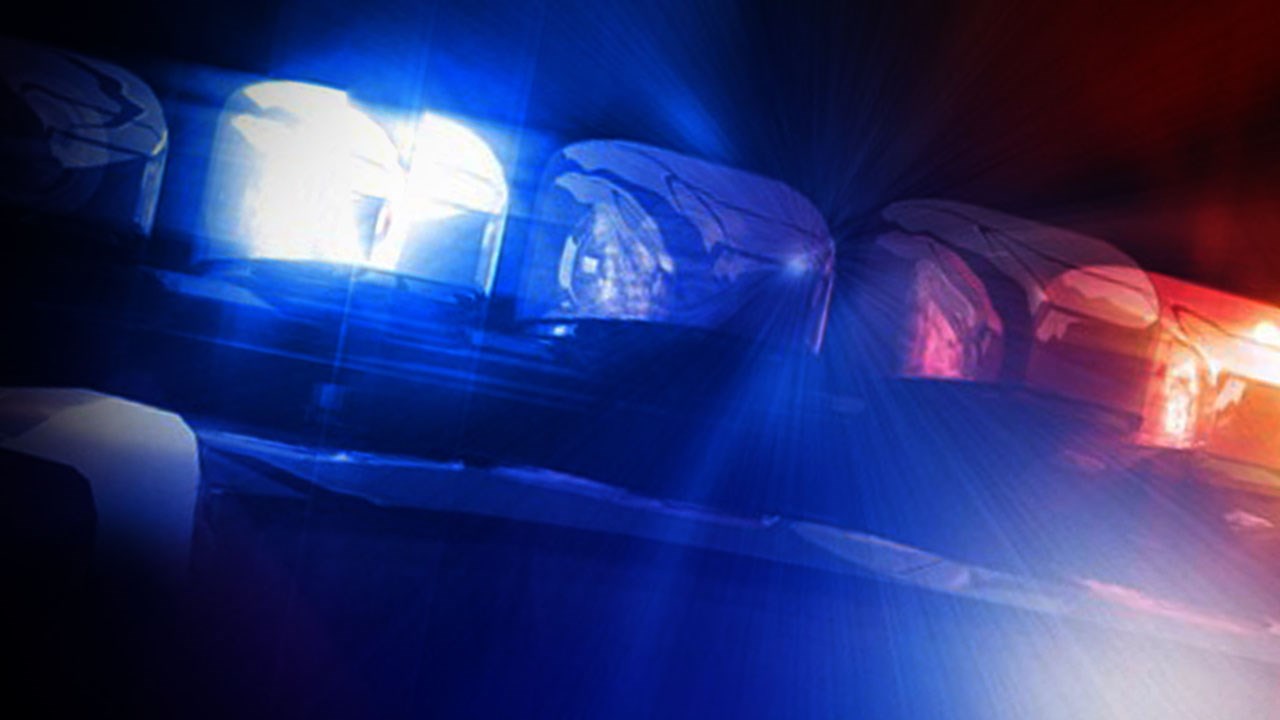
RIRIE, Idaho (KIFI) - Two people were uninjured after a small boat overturned on the Snake River Monday afternoon near the Byington Boat Dock east of Ririe.
The Bonneville County Sheriff's Office reports dispatch received a call around 2:30 p.m. advising two people were in the boat, and both were able to swim to shore. Deputies arrived and located the occupants who advised they were having mechanical issues when the boat hit a gravel bar and flipped over.
Neither of them were injured, and deputies assisted in getting them safely back to the boat ramp.
"The Bonneville County Sheriff’s Office would like to remind everyone who recreates on the water to always plan for safety before you go. Cold water temperatures and winter runoff conditions can be very hazardous even in still or slow-moving current conditions. The window of opportunity to self-rescue from the water can be mere seconds before hypothermia sets in and your ability to move and breath decreases. Boats can overturn in a second, leaving no time to stop and put on a lifejacket. Wearing a lifejacket or personal floatation device at all times will greatly increase your ability to self-rescue and survive if you end up in the water," the sheriff's office said. "As the weather warms, runoff conditions in the Snake River can change rapidly bringing a variety of floating debris and hazards just under the surface. Hazards that can quickly change your ability to safely control, operate, or remain inside a boat. Before you put your boat or watercraft in the river or lake, consider the weather and current water conditions, thoroughly inspect your watercraft, and make sure you have proper safety equipment that is in good condition."
For more information on safe boating practices, registration and invasive species stickers, and laws pertaining to required safety equipment visit the Idaho State Department of Parks and Recreation website (IDPR).
Jump to comments ↓

KIFI Local News 8 is committed to providing a forum for civil and constructive conversation.
Please keep your comments respectful and relevant. You can review our Community Guidelines by clicking here
If you would like to share a story idea, please submit it here .
- KRDO 13 Home
- Live Newscasts
- 13 Investigates
- Absolutely Colorado
- On the Lookout
- School Buzz
- Colorado Springs News
- Pueblo News
- Illicit Spas: Hiding In Plain Sight
- Funeral Home Investigation
- Closures & Delays
- Weather Maps and Forecasts
- Live HD Doppler
- Neighborhood Weather Network
- Viaero Wireless Network Cameras
- Weather Video
- Weather Photo Galleries
- Friday Night Blitz
- Livestream Special Coverage
- Body of Lies
- Identity Crisis: Olympic City USA
- Club Q: One Year Later
- Immigration in Colorado
- Black Forest Fire: 10 Years Later
- Colorado Springs Sesquicentennial
- Waldo’s Inferno: 10 Years Later
- KRDO NewsRadio Traffic
- Listen Live
- Pikes Peak Hill Climb ’23
- Radio Program Guide
- Radio Contests
- Pet of the Week
- Traffic Tracker
- Road Warrior
- Breast Cancer Awareness
- Healthy Colorado
- Telemundo Programacion
- Cooking Tips
- Victory For Veterans
- The Military Family
- Your House & Home
- Southern Colorado Jobs
- Wear Red Friday’s
- 2024 March Primary Election Results
- Broadcast Contests
- Entertainment
- Advertise with Us
- Contact KRDO
- Meet the Team
- Closed Captioning
- Download our Apps
- EEO Public Filing
- FCC Public File
- Newsletters/Alerts
- TV Listings
An abandoned, burned boat and 2 missing men: South African authorities investigate maritime mystery
By GERALD IMRAY Associated Press
CAPE TOWN, South Africa (AP) — South African rescue services searching for a missing charter boat captain are concerned about possible foul play after they discovered his boat burned and abandoned on a beach in neighboring Mozambique. There was no sign of the captain or the unknown man who hired him. The National Sea Rescue Institute raised the alarm over captain John Matambu and his passenger after they didn’t return to Sodwana Bay on South Africa’s northeastern coast. Matambu’s speed boat, Magnum Too, was discovered on a beach and had been almost entirely destroyed by a fire. Matambu’s cousin told local media that a petrol canister and a medical kit were found near the boat.
Jump to comments ↓
Associated Press
KRDO NewsChannel 13 is committed to providing a forum for civil and constructive conversation.
Please keep your comments respectful and relevant. You can review our Community Guidelines by clicking here
If you would like to share a story idea, please submit it here .

IMAGES
COMMENTS
As such a power boat, and by extension all sailboats, MUST, without question show one green light on the starboard bow and one red light on the port bow and one all around white light or lights while operating in reduced visibility. These lights should shine at all 360 degrees of visibility with the bow lights shining at an angle of dead ahead ...
A steaming light is a white navigation light fitted on the mast of a sailboat to provide visibility during low-visibility conditions. It is typically placed near the front side of the mast and angled downwards to indicate that the vessel is under power and moving forward. This light helps other boats identify and avoid collisions, ensuring safe ...
For most small vessels, motoring requires red and green (port and starboard) lights, and a white light visible in all directions around the boat. This is almost always a stern light and a masthead light on sailboats. Boats under sail require port and starboard lights, and a white stern light. Sailboats below sixty-five feet may show a tricolor ...
A properly lit sailboat at night is a boat that is equipped with the correct navigation lights, which are required by law. These lights must be visible for two miles and should include a green light on the starboard side, a red light on the port side, and a white light aft. Additionally, the boat must also have a white masthead light that is ...
The 30 most popular light sailboats All; Ultralight; Light; Moderate; Heavy; ultraheavy; Sailboat. ... 1980 artekno International H-Boat $3,500 USD. Mesa, AZ, US 1977 Catalina 22 $4,000 USD. Have a sailboat to sell? List it for free and it will show up here ...
The basic rule is that sidelights and a stern light are required. Permissible variations to this rule appear below. Sailboats less than 20m (65.7') can substitute a tricolor light for separate sidelights and stern light—or a bi-color light and a stern light may be substituted. Sailboats less than 7m (23') shall, if practicable, exhibit lights ...
On any vessel, navigation lights have a specific color, (white, red, green, yellow, blue), arc of illumination, range of visibility, and location, as required by law and regulations. For the purposes of this course, we will concentrate on pleasure boats under 65 feet in length. Knowledge of navigation lights is important to a small-boat skipper ...
The light is certified to USCG and American Boat and Yacht Council (ABYC)-16 standards. Bottom line: The $359 Signal Mate tri-color is a cost-effective option with a good five-year warranty, and the new version boasts some necessary improvements. LED BULBS.
Only five lights rated good at 2 nm: Aqua Signal's 40100-1 bi-color light and 40400-1 masthead; Hella Marine's 62208 stern light, 62206 masthead, and 6225 tri-color. (This tricolor was actually the most visible of all the lights in the test, scoring "excellent" at 1 nm and "good" at 2 nm.) Some sidelights that were rated for only ...
23 - Power driven vessels over 12m must have a forward-facing steaming light plus sidelights and a stern light below the level of the steaming light. 25 - Sailing vessels Underway shall exhibit sidelights (red/green) as either a combined or as separate lights, and a white stern light. 30 - Anchored Vessels under 50m shall exhibit an all-round ...
Sailboat-Specific Navigation Light Rules. Sailboats must have the same red and green lights as powerboats. The difference is that you'll need other ones on the stern and mast. If your boat is less than 65 feet, you can use either a combination of a bicolor light with red and green along with another at the stern or a tricolor one on top of ...
Most small sailboats under 20 feet in this list are time-tested, easy to rig, simple to sail, extremely fun, and perfect either for solo sailing or for sailing with friends and family. ... It glides along beautifully and is a dog in light air, though it won't sail against a 25-knot wind, which can be frustrating. Other than that, the Montgomery ...
Light-air sailing is some of the best sailing there is. Some of the best times aboard a cruising boat are in light airs—those quiet, relaxed sunny days with gentle sailing that just wouldn't be the same if you were motoring. However, many cruising yachts are not set up to truly fullfill their potential in these kinds of conditions.
Why is the Reverso a superlight sailboat ? It's built in house in our french factory, not at the other side of the world. So we have full control over the process; it's made of sandwich composite fiberglass with carbon reinforcements; it's built under vaccum infusion; The mast is made of high modulus carbon fiber, it wieighs only 3150 grams
Stern light. A white light mounted as close to the stern as possible and shines dead ahead in an arc of 135° (67.5° to each side). The mounting height should be aligned to the height of the side lights and should never be higher. 3. Three-colour light for sailing vessels (sailing lights) On sail boats up to a length of 20 m, the side light ...
Catalina 315. nwyachting. This is a nifty pocket cruiser that raises the quality bar for solo sailors with extreme comfort and performance. With just a 9.45 meter hull, the Catalina 315 has more internal room than most classics and remains superb for solo sailing.
LightSail is a literacy platform that helps schools improve students' reading skills and motivation. It offers a variety of features, such as an adaptive e-reader, a rich library of free books and articles, a writing solution, a vocabulary tool, a spelling bee and a gamification platform. Learn more about how LightSail can transform your literacy instruction and outcomes.
Similar to standard series 40 lights, these are 8 inches tall, 3 inches in diameter, and fit 25W incandescent bulbs (no LED option). Rigged as a red/white/red RAM light, they use 75 Ah of power each night, an unacceptable amount for many cruising boats. The cost is also steep, at $120 each ($360 total).
You'll see this light being displayed on a sailboat that's either docked or at anchor. Towing Light. The towing light is a static yellow light that sits at the same position as the sternlight and displays at an arc of 135 degrees aft the vessel. As the name suggests, this light indicates to other vessels that it's currently towing an object.
This research study evaluates the program's impact and outcomes for 280 students from in a large urban school district. Accelerate literacy development with LightSail. Students reading 30 minutes a day are seeing 2+ years of Lexile growth in a single year. Call (866) 876-7323 for details.
Snark Sailboats: Super Light, Super Fun! More people have learned to sail on Snark boats than any other boat. Easy to sail, very portable, durable, and affordable! This is the page for ordering a boat. See add-to-cart links in left column below. Boat is shipped to your door. Shipping is put out to bid after you order. Expect $400 - $1000.
An economical 2NM LED All-Around Anchor Light fixture navigation light intended to be mounted on the top of the mast on larger sailboats. It replaces the Aqua Signal Series 40 type anchor lights, as it is of similar size and height. Prefitted with a user-replaceable Marinebeam constant-current 10-30VDC BAY15d high-output LED bulb and 8" of ...
A light air sail is a large unsupported headsail designed to increase the speed of vessels sailing in light winds. Light air sails resemble parachutes, and they work in a similar way. Light air sails are attached to the boat, and some aren't supported by a boom or other structural device. They catch the wind and pull the boat along from the front.
She sailed her way into the history books. A 29-year-old skipper from New York has become the first US woman to sail solo around the world. Cole Brauer, from Long Island, tearfully reunited with ...
RIRIE, Idaho (KIFI) - Two people were uninjured after a small boat overturned on the Snake River Monday afternoon near the Byington Boat Dock East of Ririe. The Bonneville County Sheriff's Office ...
By GERALD IMRAY Associated Press. CAPE TOWN, South Africa (AP) — South African rescue services searching for a missing charter boat captain are concerned about possible foul play after they ...
The potential firing of the current smart-light contractor, Munich-based Yunex Traffic, sets up another challenge in Miami-Dade's uphill effort to improve commuting times with "smarter ...